
CONTENT MAGAZINE, SAN JOSE $9.95 Silicon Valley’s Innovative and Creative Culture ISSUE 11.3 July /August 2019 C PERFORM JARVIS SUBIA Featuring SJ Earthquakes MarCom Team Santa Cruz Mountains Vineyards SVArts Awards Steep Coffee DJ ThatGirl CONTENT EMERGING ARTIST AWARD RECIPIENT Poet | Performer | Educator

works is your community art and performance center, a welcoming space where you can experience and create exhibits and events.
now and next at works:
keyframes: experimental animation exhibition: may 17–june 9, 2019 70 graduates from sjsu’s animation program.


artists, join works to participate:
works member exhibition exhibition: july 26–august 18, 2019 a non-juried show of artist members of works. see our website for art drop off and details!

works is a creative laboratory where artists, audience, and ideas interact to expand the scope of cultural experience.

works/san josé 365 south market street exhibits and exhibit guidelines: workssanjose.org facebook, twitter, instagram: workssanjose

CISSUE 11.3 “Perform”
July / August 2019
Cultivator
Daniel Garcia
Editors
Elizabeth Sullivan, Samantha Tack
Linnea Fleming, Rah Riley
Community Partnerships
Kristen Pfund
Photographers
Sannie Celeridad, Gregory Cortez
Arabela Espinoza, Vivian Sachs
Phil Emerson, Avni Levy
Leopoldo Macaya
Writers
Hannah Duchesne, Johanna Hickle
Grace Talice Lee, Diane Solomon
Brad Sanzenbacher, Kevin Marks
Brandon E. Roos, Daniel Codella
Nathan Zanon, Sally Ashton
Peter Hsieh, Thomas Ulrich
Tad Malone, Esther Young
Publisher SVCreates

We typically think of a “performer” as a musician or an actor, but anyone that is producing or creating is performing various tasks to accomplish their goals and to further their dreams. Painters need to set up the canvas, and construction companies need to build to local ordinances and architectural plans. Winemakers need to tend the vines daily, and athletes need to train continually. There is an element of performing in all that we do if we are to bring something imaginative to completion. In this issue, we introduce you to a few locals who have been putting in the time to develop their craft, performing their daily task and rituals. Also in this issue, we celebrate the SVCreates 2019 Laureates. These are Santa Clara County artists who have been recognized by the creative community as those who have demonstrated influence, mastery, or growth in their creative practices. With that, we are excited to announce the Content Emerging Artist Award to Jarvis Subia.
Congratulations to all the SVArts recipients.
Enjoy.
Daniel Garcia THE CULTIVATOR
CONTENT To participate in CONTENT MAGAZINE: daniel@content-magazine.com Subscription & advertising information available by contacting editor@content-magazine.com IN THIS ISSUE Steeped Coffee | SVArts Awards | DJ ThatGirl | Jemal Diamond CONTENT MAGAZINE is a bimonthly publication about the innovative and creative culture of Silicon Valley, published by . 501(c)(3)
CULTURE
CONTENT
PERFORM 11.3
July / August 2019 San Jose, California
8 Civic Engagement, American Leadership Forum
ART & DESIGN
12 Branding Series: Sports Marketing with San Jose Earthquakes Hannah Duchesne
16 Industrial Designer, Matt Marchand


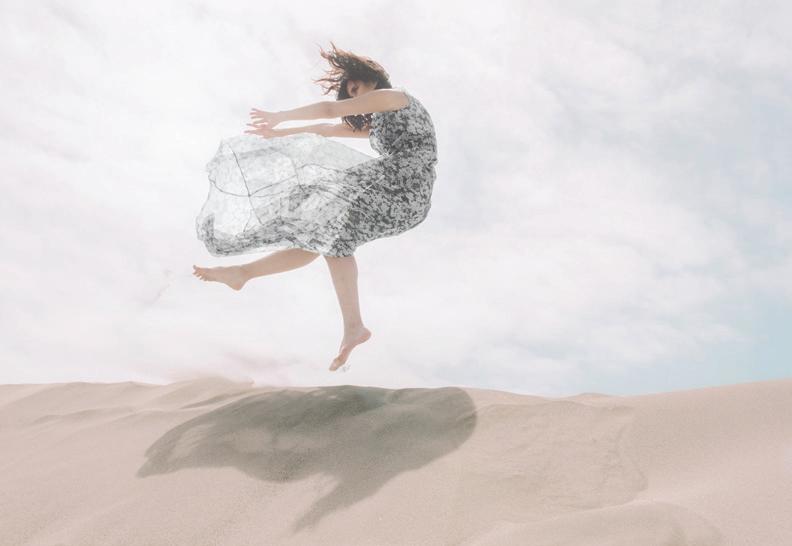
20 Garden City Construction, Jim Salata
24 Artist, Jemal Diamond
30 SVArts Recipients
PERFORM
46 Dreamland Boxing Training Center, Jesse Huerta & Chris Washington
54 Chicks in Bowls, Lucila Chavez
60 CreaTV, Chad Johnston
64 DJ ThatGirl, Melanie Panergo
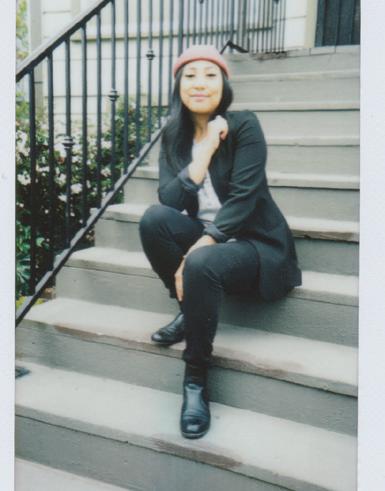
DRINK
68 Santa Cruz Mountains Vineyards, Mindego Ridge, Pescadero Creek, & Mount Eden Vineyards

76 Steeped Coffee, Josh Wilbur
STYLE
80 Beach Day, Vivian Sachs
88 Calendar 90 Contributors
All materials in CONTENT MAGAZINE are protected by United States copyright law and may not be reproduced, distributed, transmitted, displayed, published, broadcast, or modified in any way without the prior written consent of Silicon Valley Creates, or in the case of third party materials, the owner of that content. You may not alter or remove any trademark, copyright or other notice from copies of this content. For further information, or to participate in the production or distribution, please contact us at editor@content-magazine.com
Beach Day, pg. 80
Matt Marchand, pg. 16
DJ ThatGirl, pg. 64
SVArts, pg. 30
CONTENT magazine’s production is powered by
9 PRESENTED BY A SAN JOSE DOWNTOWN ASSOCIATION PRODUCTION SUPPORTED IN PART BY A CULTURAL AFFAIRS GRANT FROM THE CITY OF SAN JOSE 5:30-9 PM | PLAZA DE CESAR CHAVEZ $ 15 ADVANCE | $ 20 DAY OF | 12 & UNDER FREE W/PAID ADMISSION musicintheparksj.com JUNE 21 THE DELFONICS JULY 19 OZOMATLI AUGUST 1 CUCO AUGUST 23 J BOOG
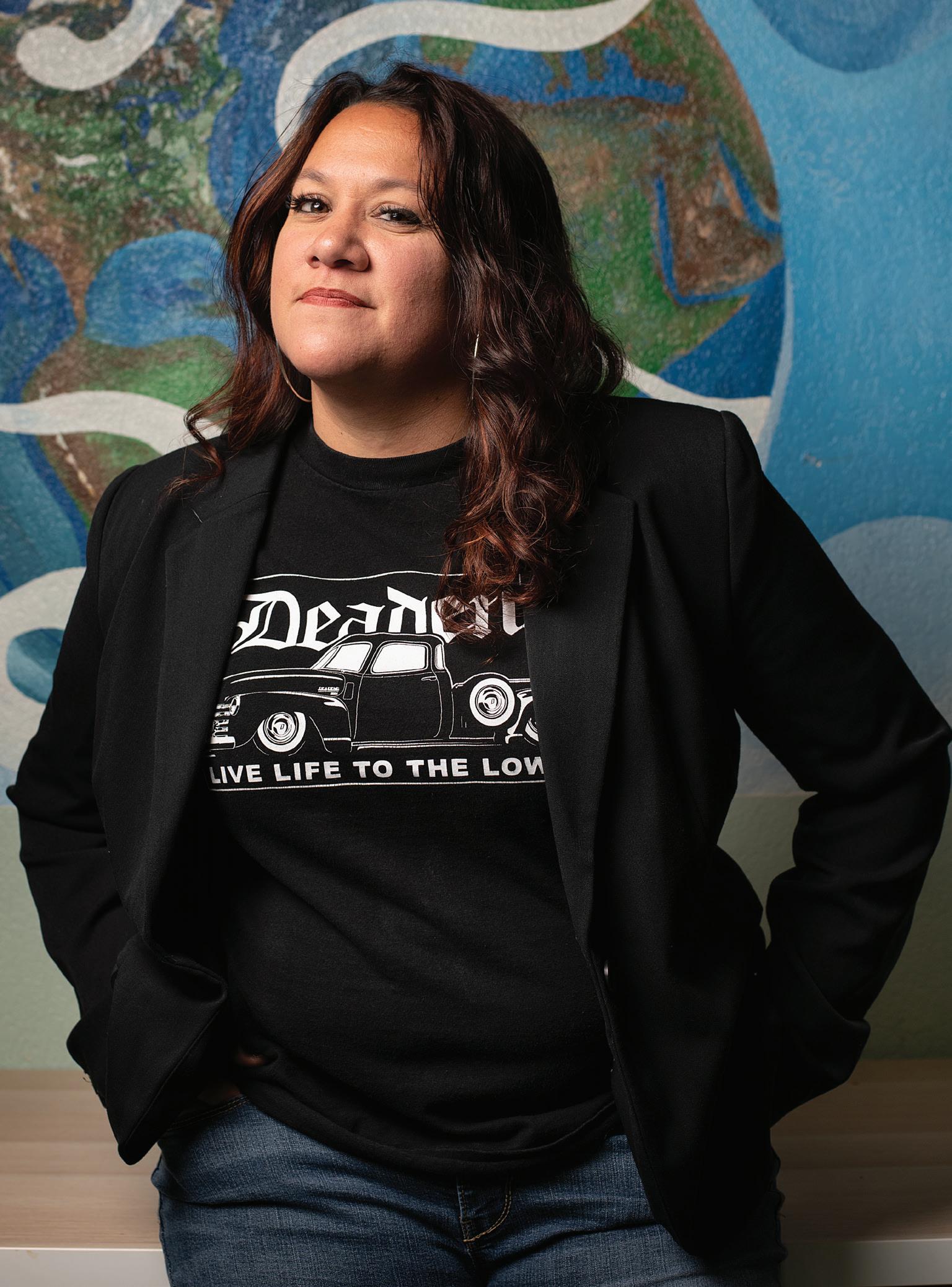 Written by Peter Hsieh | Photography by Daniel Garcia
Written by Peter Hsieh | Photography by Daniel Garcia
AMERICAN
Urban Innovation Network
LEADERSHIP FORUM
Civic Engagement in San Jose Lydia Bustamante 11 Sacred Heart Community Service sacredheartcs.org Social Media sacredheartsc



SPORTS.MARKETING
with SAN JOSE EARTHQUAKES
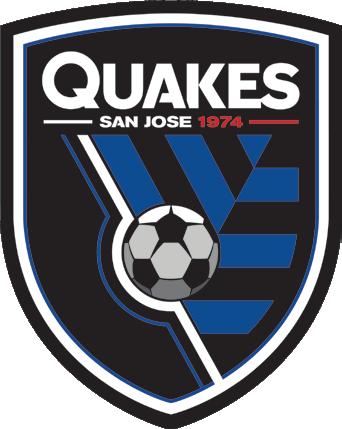 Written by Hannah Duchesne
Written by Hannah Duchesne
Voice + Visual: Communicating the Essence of a Brand
THE ROLE OF THE FAN: BRANDING IN SPORTS
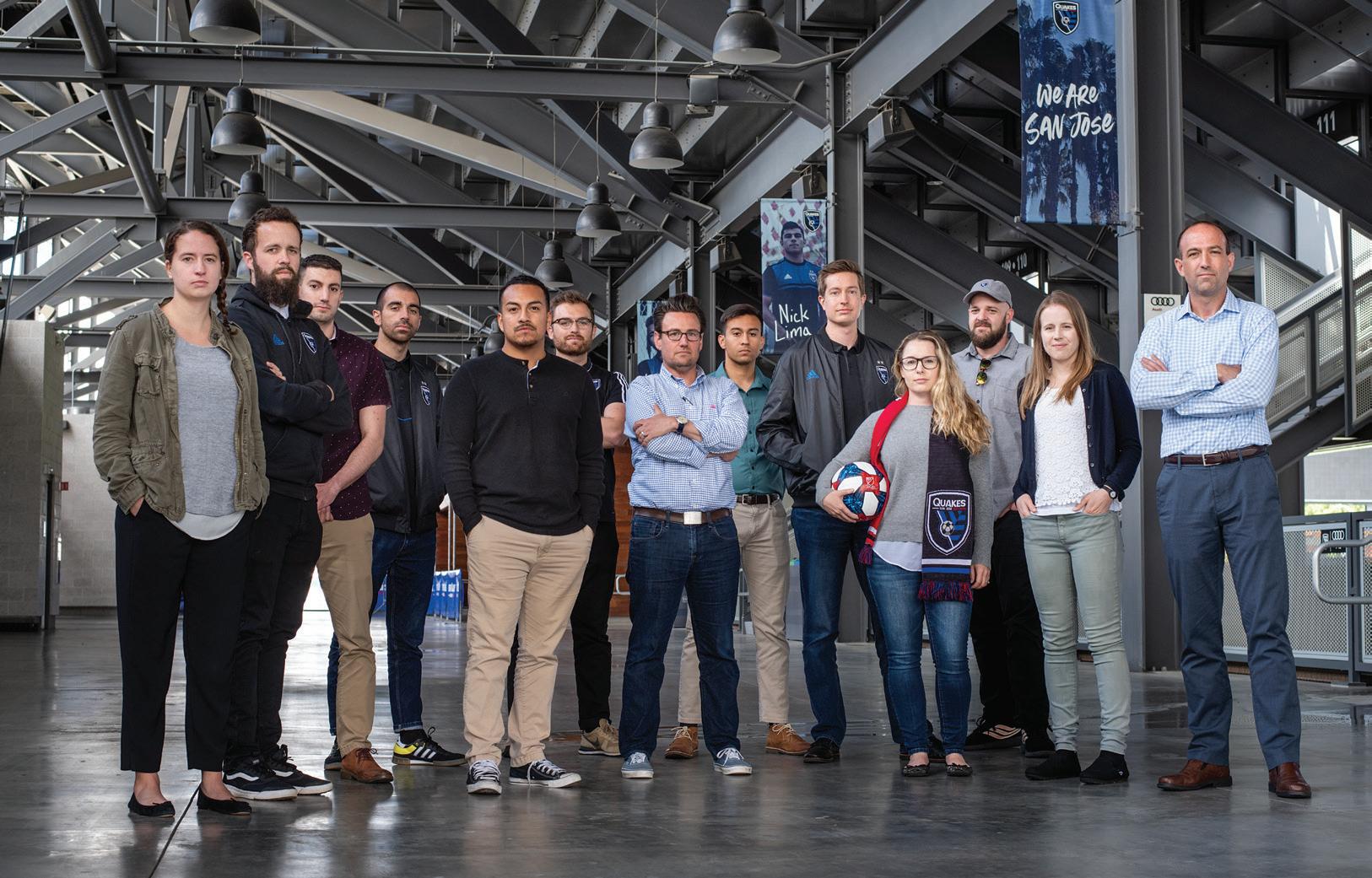
Grab a seat behind the goal about halfway up the stands at Avaya Stadium. Take in the game and the air traffic of Mineta Airport in the distance, framed by the boxy downtown San Jose skyline and the peaks that form the Santa Clara Valley. The sun sets about halfway through most games, depending on the season. Look to your left, and you’ll see a East Asian family sharing snacks, sporting Earthquakes jerseys and bantering back and forth as the game rolls on. To your right, a Latinx couple, clearly on a first date, is seated next to a group of college students. Beside them, long-time season ticket holders proudly wear vintage soccer swag dating back to the early days of Earthquake territory. The experience of the game, in the still-new Coleman Avenue stadium, is a quintessential San Jose experience, and that’s just the way the Earthquakes like it.
The element of the “fan” in sports is inextricable from the sport itself. The ultimate brand loyalist, a sports fan (short for “fanatic,” of course) identifies him- or herself with the chosen brand on a personal level. Part
of the fan’s identity is wrapped up in devotion to the team, the obsession with wins and losses, and the dedication to the success of the sport. The fan self-identifies as a “die-hard fan” and describes how his or her relationship with the sport and the team affects not just game day, but every day. This deep identification with a brand is the kind of relationship that drives an entire industry and raises a poignant question: How are business identities (brands) created, and how do the best brands resonate so loudly with people? Indeed, many people see their teams as inextricable parts of their personalities.
“They see us more as a club than an organization,” offers Jed Mettee, Executive Vice President for the San Jose Earthquakes soccer team. In this “club,” fans are on equal footing with the players in terms of value and influence. Regarding branding in sports, and soccer in particular, the fans are as important as anybody else in making the whole system work. But it doesn’t happen by accident. The perception, reputation, and in-the-flesh reality of the Quakes brand is a direct reflection of their intention to pro-
San Jose Earthquakes 1123 Coleman Avenue San Jose, CA 95110 sjearthquakes.com Facebook sanjoseearthquakes Instagram sjearthquakes Twitter sjearthquakes 15
SAN JOSE EARTHQUAKE MarCom Team

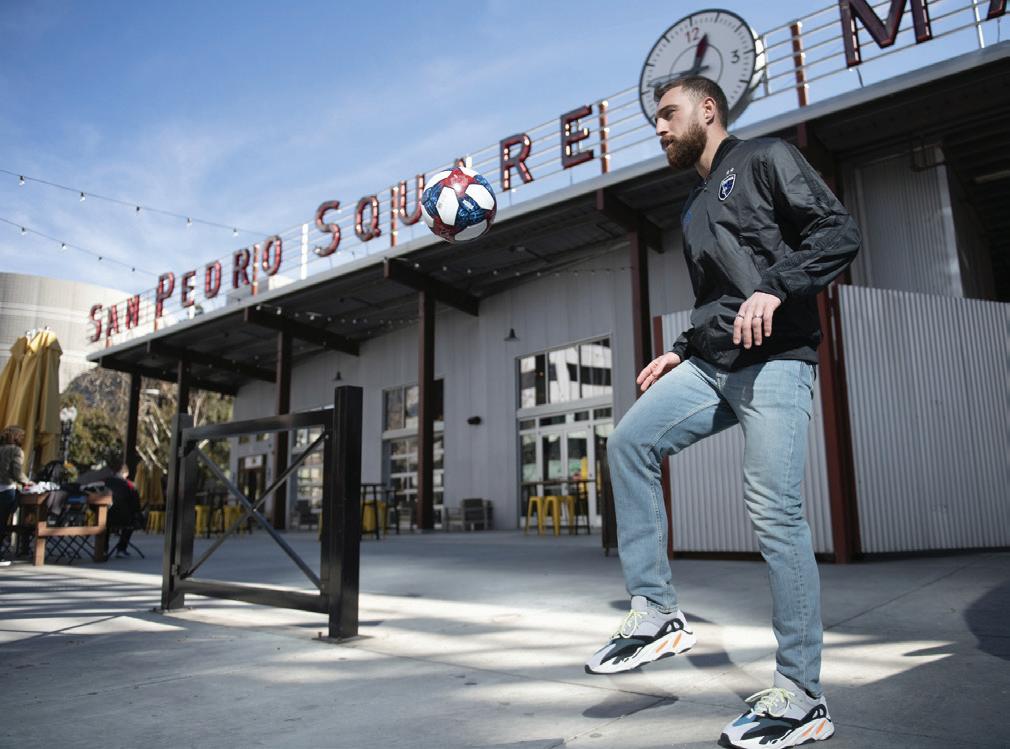

 Written by Daniel Codella
Photography by Sannie Celeridad mattmarchand.com Instagram matt.marchand
Written by Daniel Codella
Photography by Sannie Celeridad mattmarchand.com Instagram matt.marchand
Industrial Designer MM
Storytelling Through Things
Technology has advanced so rapidly that it’s almost difficult to imagine how our future could be any more futuristic. We have electric vehicles that drive themselves, virtual and augmented reality that enables us to explore new worlds, and perhaps most astonishing, smartphones that connect us with billions of other people around the planet and that open up communication on a scale never before possible, giving us access to nearly all of humanity’s collective knowledge.
Just about any piece of art, literature, music, or film can be accessed instantaneously through a smartphone—these powerful little devices have replaced cameras, calculators, televisions, books, radios, phones, CD players, and dozens of other objects from our lives.
But despite the convenience, cost savings, and ubiquity of screens, people are looking
back longingly to times when we didn’t have them. “We’ve always got a screen in front of us. We are a bit starved for reality,” says Matt Marchand, an industrial design student from SJSU.
You can see this trend everywhere once you start looking for it. Teenagers listen to the latest albums on vinyl, even though they could just as easily stream them. Instant cameras are hits at parties and weddings, even though phones take infinitely higher-quality photos. And physical book sales continue to increase year-over-year, even though most books can be downloaded on smartphones and tablets. “I think a part of us misses picking things up, pushing things over, touching and feeling. I’m trying to swing the pendulum back over to physical things,” says Marchand. Marchand grew up in Tucson, Arizona. The only child of an ar-
chitect, Marchand quickly became his father’s go-to assistant and handyman. His father had one simple rule that seems to have been more of a challenge in disguise: “You’re not allowed to be bored.” When he wasn’t inventing new contraptions with Legos, Marchand learned craftsmanship by helping his dad renovate houses across Canada, Vermont, and California.
When he got into college to study business, a girl he had been dating urged him to explore the field of industrial design. Combing through information, he came across a video about a computer mouse. He was captivated by the smooth lines, thoughtful details, and beauty and function of the design. Realizing he had found his calling, Marchand changed his degree and later asked the girl, Kate, to become his wife.
Now in his last year of the
19




20 Perform 11.3
“I think a part of us misses picking things up, pushing things over, touching and feeling. I’m trying to swing the pendulum back over to physical things.”
-Matt Marchand
SJSU design program, Marchand has built up an impressive portfolio of original designs. Influenced by his time interning at the design company IDEO, Marchand’s approach puts people at the center of his process.

“If you’re a good designer, you’re a good observer. You need to fully understand the people you are designing for, their environment, and the context of their experience. For example, are you designing for the elderly? Spend time with your grandma and your friends’ grandmas. Get a feel for their emotions and ask questions. It’s critical to have childlike curiosity.”
That respect and thoughtfulness goes beyond the users of his designs; it extends even to the designs themselves. Marchand displays a reverence for the ma-
terials and the objects he makes with them. To him, design is more than problem solving—it’s storytelling. “Things have stories. Things mean something. There is no real story when you order something on Amazon, and it comes to your door,” he shares. It’s obvious going through his designs that each new creation is more than just a tool or toy—they’re new lives he’s lovingly forged into existence; beings with a place, purpose, and future.
Sustainability is another theme in Marchand’s work. He believes well-designed products should be built to last and that producers should be responsible for how their products impact the environment. “With everything going digital, nothing has weight anymore; there’s
no staying power. They just notify us they exist. I love wellcrafted things and hope people can learn the importance of things being made well. People will keep things longer if they matter to them.”
San Jose is at the epicenter of the digital revolution. We’ve helped transform thousands of once-physical objects into digital ones and zeroes. But there’s also a rebirth happening, or maybe it’s more of a rebellion. We’re realizing that our magic screens have come between us and each other. We see the need to think more long-term about the things we buy and how they impact our environment and our own future. Fortunately for us, people like Matt Marchand are helping lead the charge. C
21
Garden City Construction
Jim Salata
Jim Salata shares a common motivation with the paleontologists of an excavation site—he’s compelled by a constant itch to answer the question “What’s underneath?” But instead of unearthing dinosaur fossils, Salata unveils old architectural features. As he walks the streets of downtown and its surrounding neighborhoods, his brain is continually peeling away plaster and stripping back panels to imagine the hidden gems boarded up by brash contractors long ago.
“When you see the siding on some of these Victorians, it’s real tight where the window is,” Salata notes. “You know the original stuff’s underneath there.” He puts that perceptive gaze to good use as the president of Garden City Construction, a company with an emphasis on the preservation and restoration of historic buildings.
In his younger years, Salata spent time as a laborer—tearing off old roofing and carrying buckets of hot tar up ladders before working his way up to concrete cutting and demolition. His lightbulb moment came while demolishing plaster off a property on San Fernando Street. After stripping away unwanted layers, Salata discovered an old tin sign announcing the building’s past life as State and Savings Bank. Like a name tag, it felt a little like an introduction.
After more plaster removal, he exposed an old-fashioned light fixture. “It came down to a little point. I [tapped] it with a sledge hammer. And this old light bulb,” he pauses to snap his fingers for emphasis, “turns on!”
After that, Salata wondered what other age-old remnants were waiting to be brought back into the light. He shakes his head as he explains how many historic buildings fell casualty to modernization.
“It was the inner-city revitalization of the ’50s to the ’70s, of just wiping things out and making it plain. They didn’t understand the value,” he says.
“
‘It’s old so we’ve got to get rid of it.’ ”
Historic property restoration is a niche market. It’s no easy task, and most contractors don’t have the stubborn patience required to do it well. “It’s hard,” Salata confirms. “It’s dirty at times. It’s very cerebral.” He also notes it requires creative problem solving and an out-of-the-box mindset. “This is not normal thinking. You have to be a little twisted like myself to figure this out,” he chuckles.
You might call Salata an architectural sleuth of sorts—it’s his profession to uncover the clues of a building’s past. By searching under floorboards for broken shards of tile and around crawl spaces for discarded slabs of terracotta and hunting down old photographs, maps, and city directories, he gradually pieces together the bigger picture. “I always say that every building has its own personality,” he elaborates, “and you’ve got to figure it out and bring it back.”
Garden City Construction—along with its subdivision Buccaneer Demolition—also emphasizes adaptive reuse of old structures. To illustrate, Salata says that two years after salvaging masonry from a century-old fireplace, he repurposed
Written by Johanna Hickle
Photography by Gregory Cortez Garden City Construction 618 South First Street San Jose, CA 95113 gardencityconst.com
22 Perform 11.3
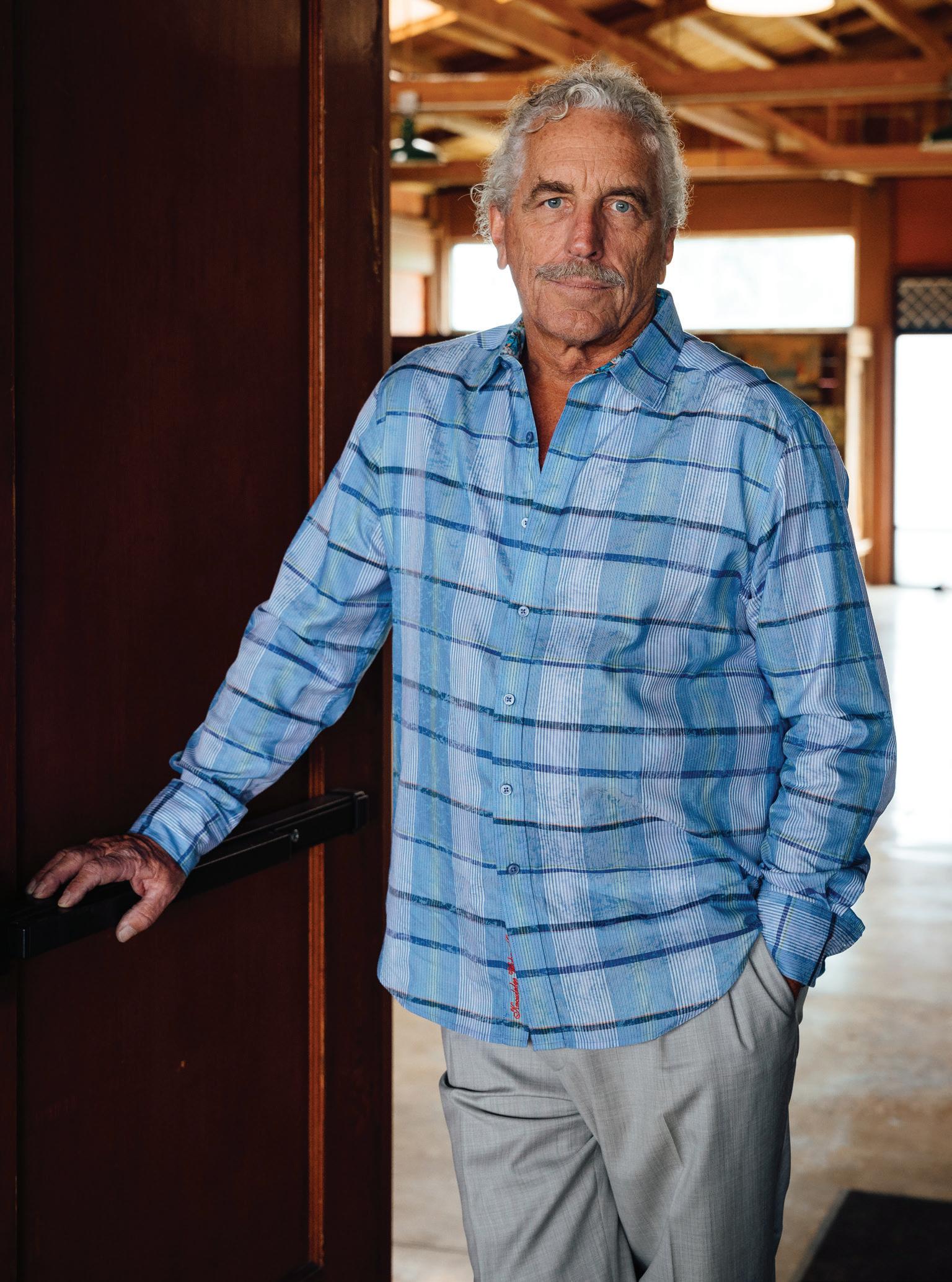 Jim Salata
Jim Salata
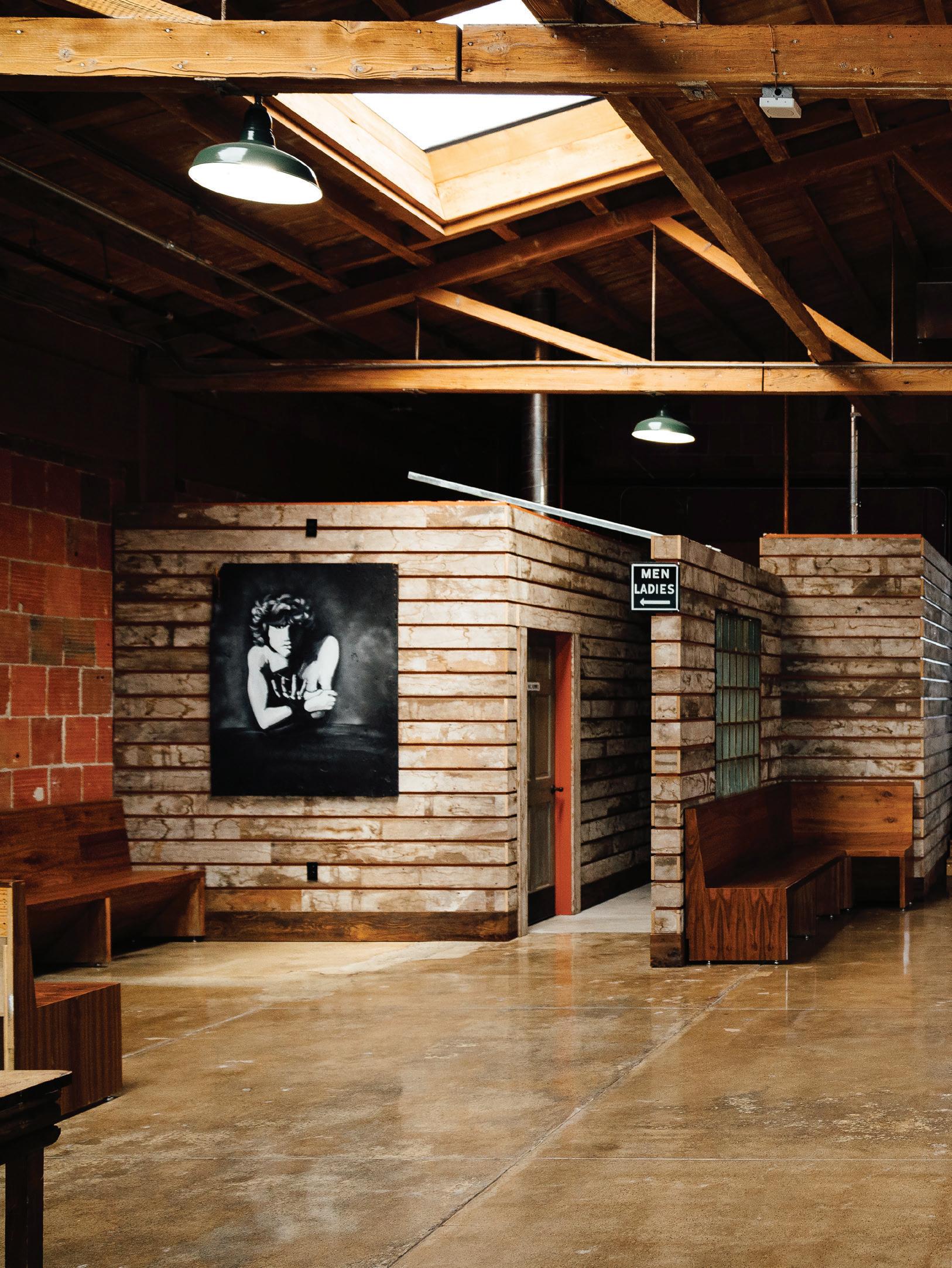
“I always say that every building has its own personality, and you’ve got to figure it out and bring it back.”
–Jim Salata
the old materials, replacing missing bricks in planters at the Del Monte district manager’s office. The color and texture were a perfect match.
“I try to plug all these things into my head and where they’re at, and memorize it all so that somehow, down the road, I can connect that dot.” His brain is always processing where he’s seen something before. “I might wake up and say ‘I know where that piece of wood is,’ ” he laughs. “You keep working, working, and then everything clicks in.”
As a second example, he points to Studio 724, his private event venue. “There was a whole bunch of rot in [the rafters]…but you can’t see where we replaced it.” It took him a number of tries to match that lumber perfectly—he almost gave up. But finally, he recalled wood beams from a demolition job at an old Santa Clara plant. “You have to want to get it right and not just throw in the towel. Once in a while, you have to really grit your teeth to make it work.”

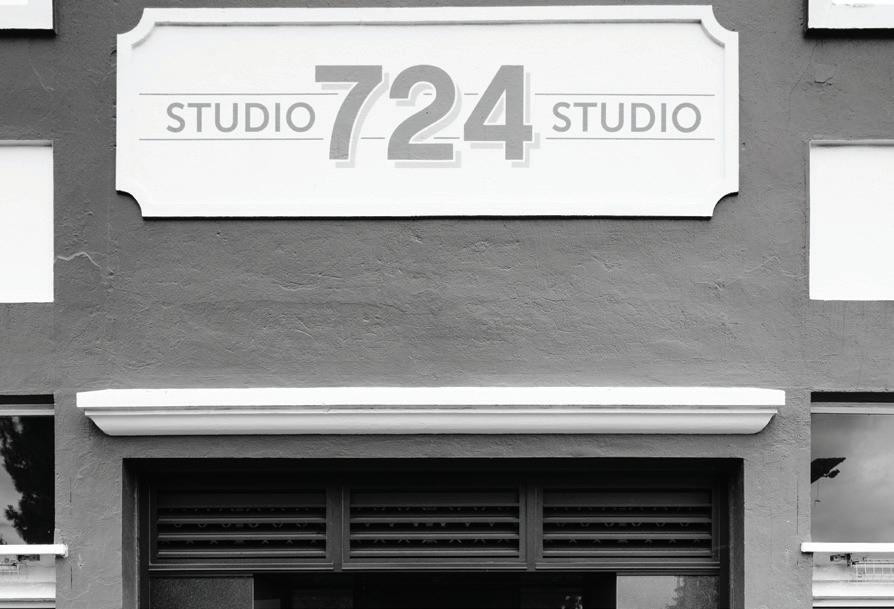
Salata’s studio, stocked with his construction and demolition finds, is a prized creation for the contractor. His hands move as he speaks of the space and its reclaimed décor, of its salvaged doors and tables, of its antique safes, of its entire wall of ’60s and ’70s production art found abandoned in an Oakland warehouse. The movement illuminates his gold wedding band engraved with the pirate skull and crossbones, red rubies for eye sockets. It seems a fitting detail for this treasure hunter of architectural antiques. C

25
 Written by Tad Malone
Photography by Leopoldo Macaya
thejemalshow.com Social Media thejemalshow
Written by Tad Malone
Photography by Leopoldo Macaya
thejemalshow.com Social Media thejemalshow
JEMAL Diamond
Even when he isn’t consciously looking for it, artist and graphic designer Jemal Diamond seems to find duality in his art.
Born and raised in Stockton, California, Diamond moved to the Midwest after high school—St. Louis, specifically—where he studied theater in college. Starting out as an actor but ending up as a director, Diamond eventually made his way up to Chicago where a vibrant and extensive small-theater scene welcomed him. Soon, he was running a small theater company with his friends, but meeting after meeting led Diamond to experience something of a crisis of faith. “[I] had a major life crisis and pretty much quit theater forever,” Diamond says. “It was then I decided I wanted to make visual art, particularly visual and graphic design.”
Being a poor theater kid, however, didn’t lend itself financially to getting a proper art education. But Diamond found an ingenious backdoor; after landing a job in the computer lab at the School of the Art Institute of Chicago, he learned that one of the benefits of being on staff was the tuition remission benefit, meaning Diamond could effectively go to school for free as long as he was employed by the school.
So, he spent the next decade at the Art Institute, slowly moving upward in both employment and as an artist, eventually, after many a night school class, earning an MFA in visual communication after many a night school class. “I took classes in every discipline, including design, art and technology, painting, fiber arts, and video,” recalls Diamond. “Everyone around me took it very seriously, and I was exposed to some really practical ways for making a living.”
Indeed, soon after graduating, Diamond found success as a graphic designer and art director, shaping the art and design for various technology firms and companies for 15 years. This led him and his family to the Bay Area—first to Oakland, then further south to Sunnyvale.
27
Artist and graphic designer Jemal Diamond finds dualism in the shape, form, and purpose of his vibrant, expressionistic portraits.
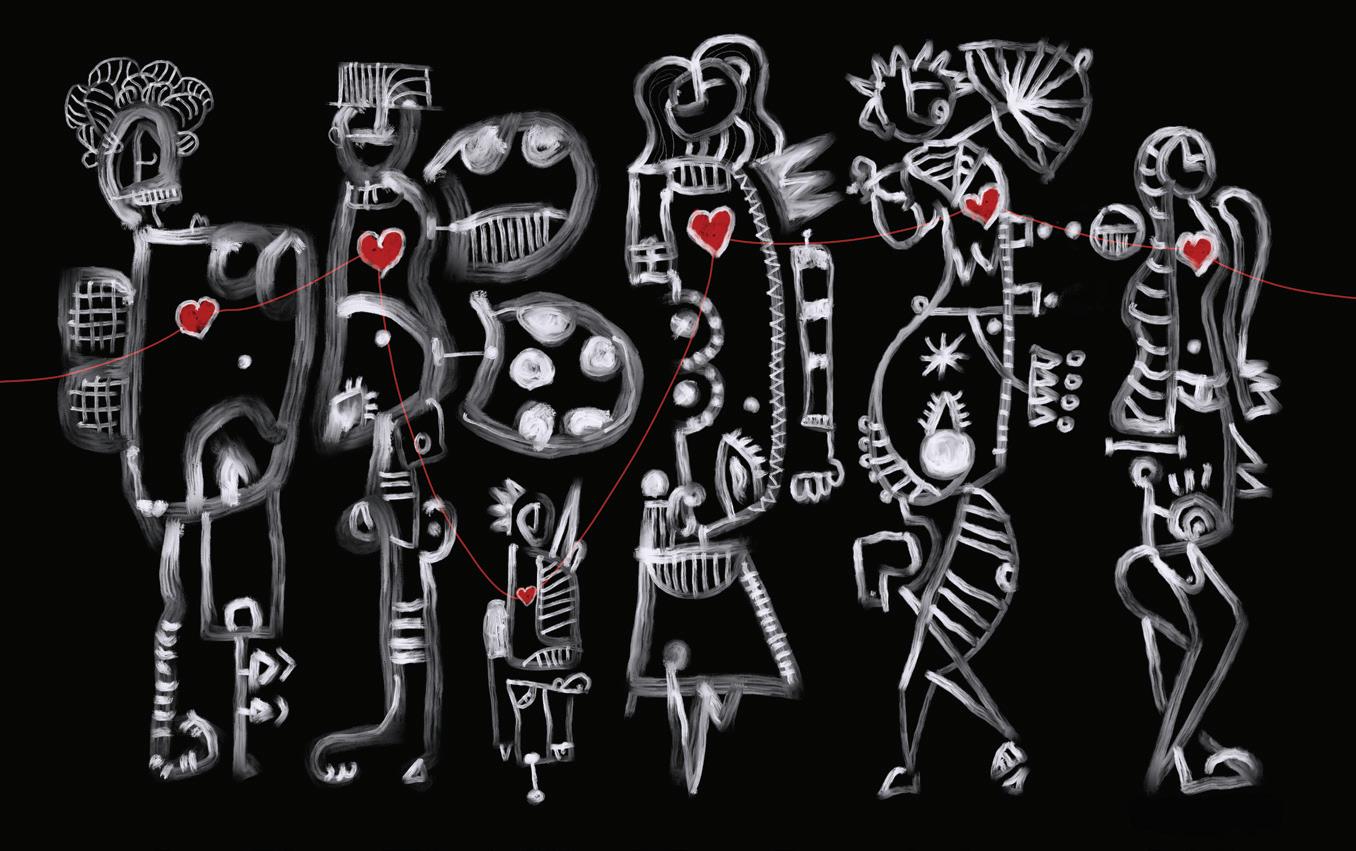
 Fete Silhouettes, titled by Chuka C.
Fete Silhouettes, titled by Chuka C.
28 Perform 11.3
Dimanche Le Long de La Côte, titled by Carl Y.

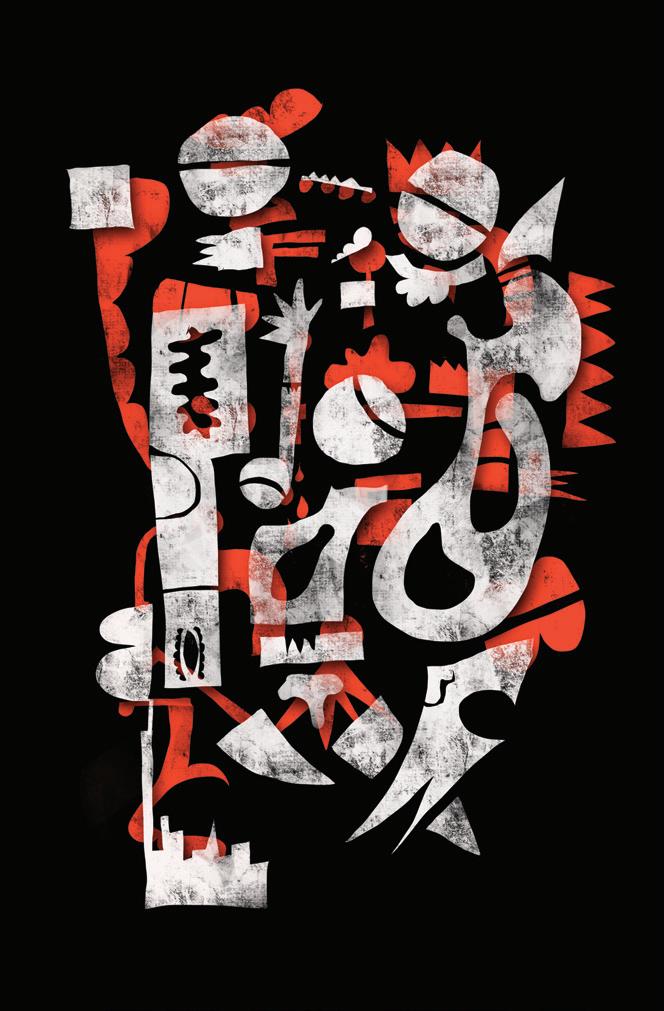
29
Love Machine, titled by Nicole G.
Too Upsetti 4 Spaghetti, titled by Izabella R.

“I purposely embed multiple and contrasting symbols, figures, and visual structures in hopes that [the viewers] find their own narrative.”
-Jemal Diamond
30 Perform 11.3
The Dilemma, titled by @projectartineverything
Throughout his career, Diamond has also been coming home from work and creating his art, free from clients’ demands. Armed with something of a Shaolin master’s education in art, Diamond creates arresting yet inviting expressionistic portraits, mostly in pen and ink or digital mediums.
Capturing the childlike innocence of the early German and French abstract expressionist painters like Paul Klee, Joan Miró, and Marc Chagall (artists who he counts as influences), Diamond creates fascinating humanoids—not limited to flesh and bone—but instead manifested in vibrant, rhythmic tones and patterns that are both abstract and familiar. His figures express a certain dualism in intention versus reaction, form versus shape, and much more. “I purposely embed multiple and contrasting symbols, figures, and visual structures in hopes that [the viewers] find their own narrative,” Diamond says of his compositions.
And while he injects a fair amount of deliberateness in his art’s thematic or contextual intentions, his process is far more chaotic. “My creative process is intuitive and wholly improvisational. I usually do not have any intended outcome in mind but hope for joyful surprises,” Diamond says, adding: “Over the years, three visual motifs developed that I like calling ‘the Goddess,’ ‘the City,’ and ‘the Map to Heaven.’ Often, you’ll see these frameworks at play and sometimes a mix of two or all three. For me, the challenge is often not how to begin, but when to stop.”
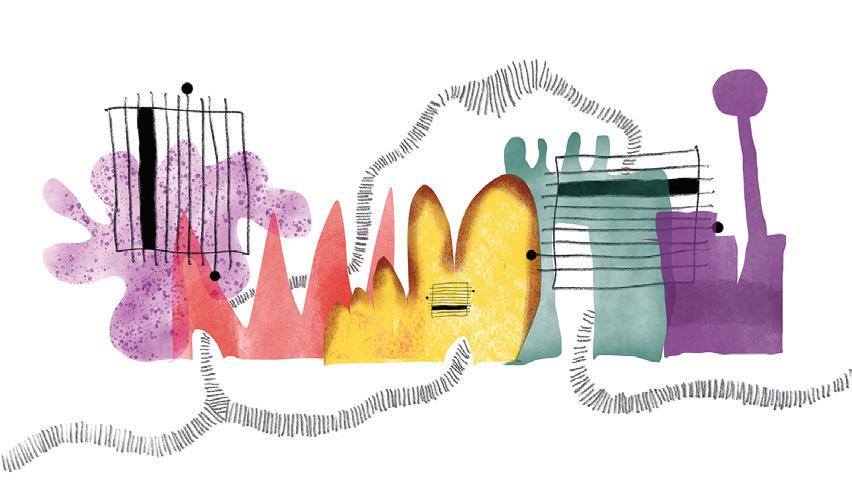
Another fascinating aspect of Diamond’s creative process is his “outsourcing” of a portion of his art. A practice he’s been exploring since the days of LiveJournal, Diamond asks his viewers to come up with the titles for his pieces, opting to let the audience shape and focus a given piece as much as the artist. “I’ve been asking viewers to title my abstract work since I was in art school, and I’m absolutely in love with that dialogue,” Diamond says of this technique. “By asking people to give my work their own title, I’m inviting them to collaborate with me on a meaning.”
As with many creatives in the South Bay, when Diamond first arrived, he felt the landscape to be a bit culturally malnourished. But Diamond found a home in the burgeoning art scene in San Jose. Showing his work often at KALEID Gallery and the School of Visual Philosophy, where he also keeps a studio, Diamond only hopes to keep his art and audience growing. C
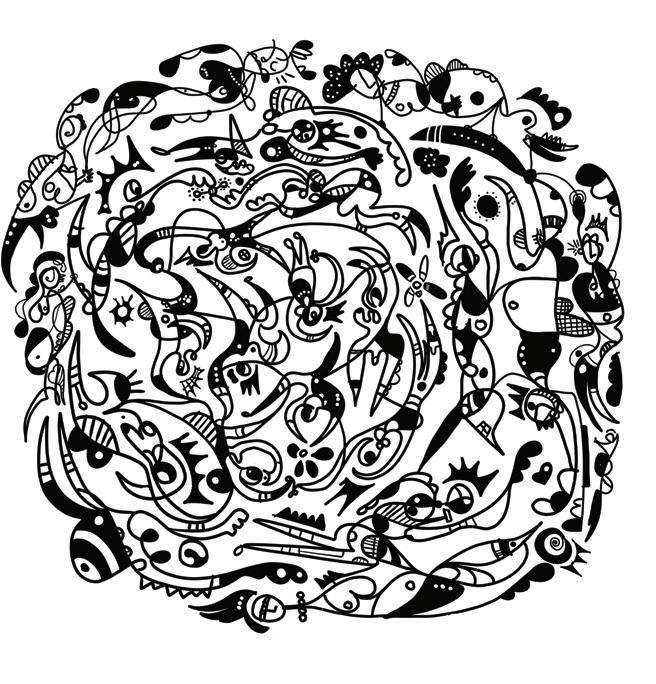
31
Chagall Dancers, titled by Natalie A.
It Takes a Village, titled by Lisa A.
VArts S
Andrea Bechert Backstage
Jarvis Subia Emerging Artist
Mel Day SV Nexus Award
Nils Peterson On the Page
Pantea Karimi On the Wall
Ray Furuta On Stage
Renee Billingslea On the Wall
2019
The SVArts program annually awards prestigious honors to Santa Clara County-based artists in a variety of categories and disciplines. In the nearly 30 years since its establishment, the program has awarded more than 175 artists who push the boundaries of creativity with both recognition and a cash prize to assist in pursuing their craft. This year, awards were given in the categories of Backstage (for those working behind-the-scenes in a theatrical setting), On Stage (for a performing artist), On the Wall (for visual artists working in traditional or mixed media), On the
Page (a new award recognizing an artist in the literary arts), Emerging Artist (for a young artist in any medium who shows promise for continued growth and excellence), the SV Nexus Award (honoring an artist who uses technology to fuel their creative work).
The artists are chosen based not only on their body of work, but also on their community involvement and engagement. As educators, artists, and performers, each of them has devoted time not only to their own craft, but also to mentoring others and forging new cultural connections in the diverse Silicon Valley community.
33
Andrea Bechert Backstage
Andrea Bechert traces her interest in scenic design for live theater back to her middle school years watching her father design a tunnel through a mountain, helping him build things, and feeling his support of her creativity. “Both my parents taught me to work hard, do my absolute best, take great pride in all that I do, treat everyone with respect and kindness, and to see the beauty in the world all around us,” she says. Bechert attended Ohio University and studied scenography, then did an internship at the Salzburg Festspielhaus in Austria. In the ’90s, she moved to the Bay Area with no contacts and no work, finding what opportunities she could as a designer, a stagehand, a scenic artist, and a props master. A two-year sabbatical in Chicago turned into 11 years, but she eventually returned to the Bay Area, which she considers “one of the most beautiful places in the country.” She has now designed over
350 productions nationwide, and in addition to continuing to work in theater, teaches at both San Jose State and the Mountain View Center for Performing Arts.
“As a Scenic Designer, I have a unique and magical task. I create a new world for each production, unique to the particular characters and stories. When I do my job well, the audience connects with these visuals, becoming engrossed in the experience of the play, transported momentarily into the world of the characters. In the best of instances, my design, the arrangement and composition of the visual elements, inspires mental and emotional connections in the audience members’ minds. Live theater is like a guided dream for the audience, and each audience member’s experience is unique and magical. Designers do not just design spaces and environments, we design dreams.” C
Written by Nathan Zanon Photography by Daniel Garcia scorpiondesigns.net
34 Perform 11.3

 Written by Nathan Zanon Photography by Daniel Garcia flowerboywrites.com Instagram words_and_facialhair
Written by Nathan Zanon Photography by Daniel Garcia flowerboywrites.com Instagram words_and_facialhair
Jarvis Subia Emerging Artist
Jarvis Subia was born and raised in San Jose, graduated from Oak Grove High School, and attended college at San Francisco State, where he found his passion at a campus spoken word poetry group called S.P.E.A.K.
(Spoken Poetry Expressed by All Kinds). He soon began traveling the country, competing in poetry slams as a representative for local poetry groups. In 2018, he earned the Grand Slam Champion award at the San Jose Poetry Slam. His writing draws on influences from music to visual arts to photography, and touches on topics of personal experiences, social issues, and community. While he will always consider the world of slam poetry home, he aspires to hone his craft to create literary work as well, bringing “a new fierce voice to an older practice.”
“I’ve been blessed with [the chance] to travel and perform my work across the country. It’s a gorgeously wholesome feeling to be recognized by the city you grew up in. The arts always seem to be combatants in juxtaposition with gentrification. It continues to seem [that way] in the Bay as more new and affluent people move in and more artists move out, pushed out by the rising cost of living and lack of adequate work, especially work that provides enough to comfortably create art. There are so many writers, performers, organizers, painters, photographers, etc. coming together to ensure art happens; arts tend to get cultivated by the people who need it most. [There are] new, urgent voices and art movements emerging.” C
37
Mel Day SV Nexus Award
Mel Day was born and raised in Canada, the eldest of nine children. Her parents were botanists, and at a young age she found creative inspiration in the strange fungal forms she saw as she peered into their microscopes. On her educational path, she took many turns through various colleges, exploring different artistic practices and embarking on scientific adventures; she eventually wound up with an MFA from UC Berkeley. Today, her wide range of multidisciplinary experiences and interests have manifested in a new participatory singing platform and video installation inspired by her previous work, Wall of Song, which compiled hundreds of online voices into a community musical experience.
“I remember working on a piece that was one of the most technically and emotionally challenging projects I have
ever made. The piece just went through one too many moves, as it were. But this piece catalyzed my practice. I received valuable feedback, learned restraint, and kept following the thread of the work. I now draw upon these learnings as an educator and ultimately am grateful for the ways in which I’ve been privileged to continue in my practice. I feel inspired and mentored by many of the people that I’ve met in this area who are working at the edges of their fields. I realize now that living here has deeply influenced, nurtured, and supported my practice in a way that might not have been otherwise possible. I’ve been drawn to the resonance of collective singing ever since I can remember when my father first played records at top volume in our living room of thousands of Welshmen singing. These voices have now come full circle in my work.” C
Written by Nathan Zanon
Photography by Daniel Garcia mmd.ca wallofsongproject.com
38 Perform 11.3
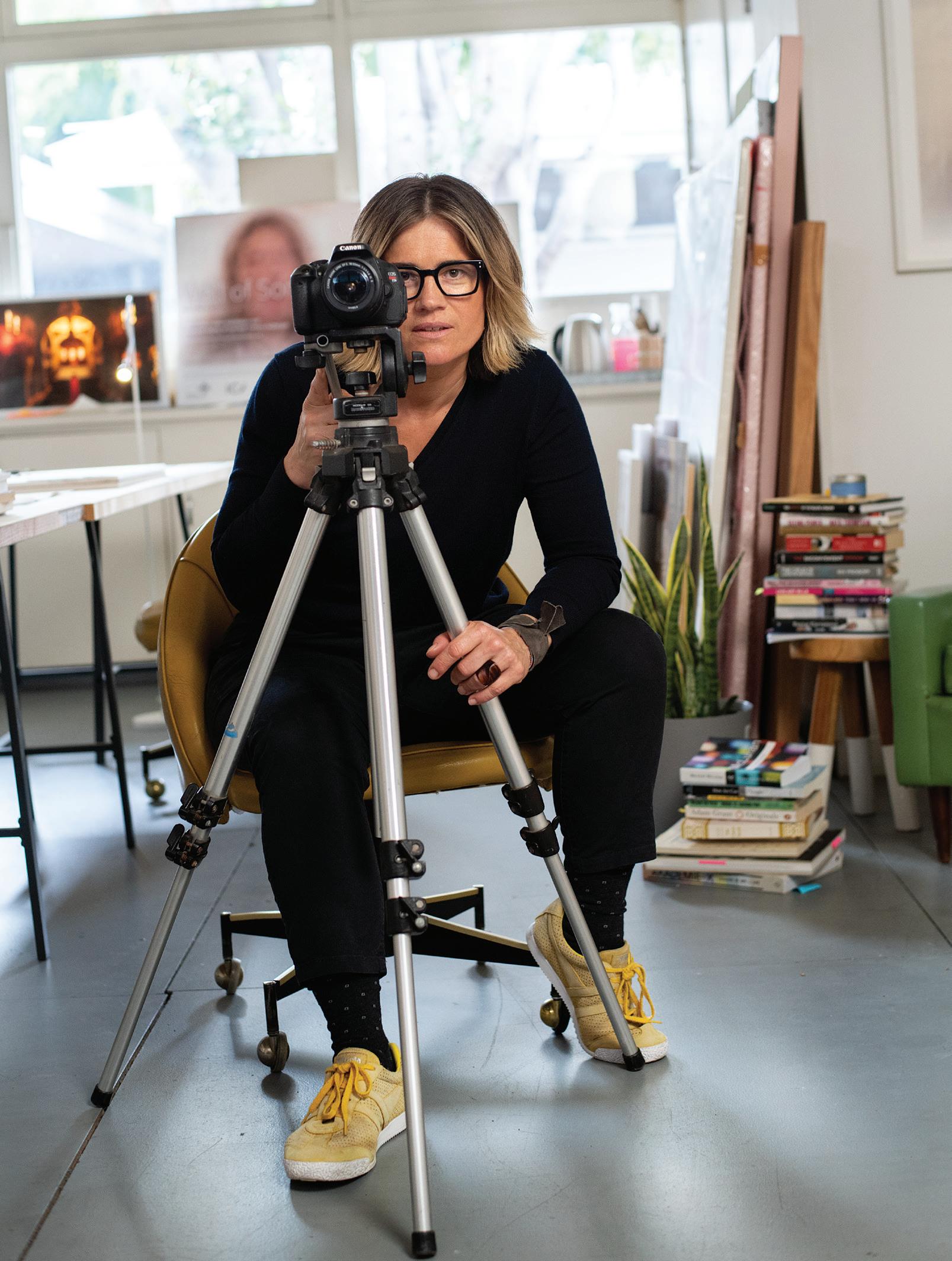
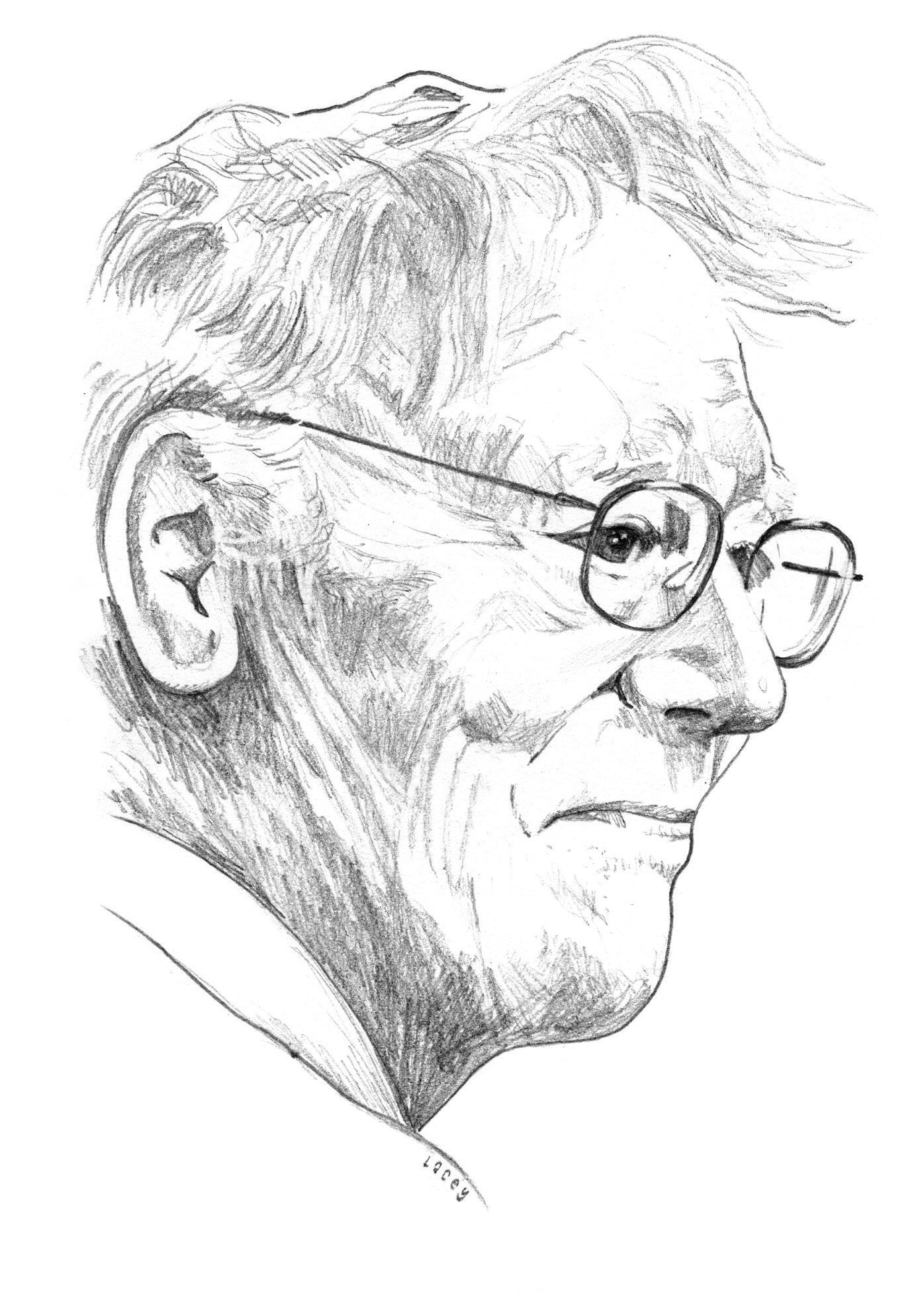 Written by Sally Ashton Illustration by Lacey Bryant Facebook nils.peterson2
Written by Sally Ashton Illustration by Lacey Bryant Facebook nils.peterson2
Nils Peterson On
The son of immigrant parents who met in an English-as-second-language class in New York City, Nils Peterson was just four years old when he went to his grandparents’ farm in Sweden for a few weeks. He came home speaking Swedish, English forgotten—his gift for language clearly coming early. In 1963, by then a young professor of English literature, Nils arrived here to teach at San Jose State. He and new wife Judith had driven straight from New Jersey, all they owned packed in their car, a baby on the way.
Today, as award-winning poet, beloved teacher, San Jose State University professor emeritus, and cofounder and guiding force behind the Poetry Center San Jose since 1980, Nils is an artist of profound presence. Through song, paint, pen, and, of course, language, he demonstrates a creative capacity as diverse as his collaborations. He has worked on projects with artists, musicians, and writers, including artists Harry Powers and Steve French, conductor Charlene Archibeque, and poet Robert Bly. Paintings by Patrick
Surgalski accompany Nils’ stunning new poetry collection, All the Marvelous Stuff.
Nils’ ability to engage others in their own creative enterprise is equally profound. He has inspired hundreds of local poets through innumerable workshops and public performances, including his famous Valentine’s Day Reading, when he leads the audience in singing “Some Enchanted Evening.” As Santa Clara County’s first poet laureate, he established the annual Poetry Invitational at San Jose Museum of Art that continues to engage poets with artworks today.
Nils’ poems pay fierce yet tender attention to the seen world. He reflects deeply on close observations and our human situation. He often looks back at his early years, the scope of change he’s witnessed, and the enduring influence of his father. Though he remembers himself as “not an especially triumphant boy,” as honored poet, teacher, and generous member of the arts community, Nils continues to bring readers “all the marvelous stuff.” C
Page 41
the
On the Wall Pantea Karimi
Iranian American visual artist Pantea Karimi began formally studying art at age 14 and never looked back. With the encouragement of her parents, she earned an MFA in graphic design from the Art University in Tehran before opening up her own studio there. In 2001, she moved to England to study printmaking while showcasing many of her own works in galleries and collections around the world. She continued her studies at San Jose State starting in 2005 with a second master’s degree in painting and printmaking. Drawn from an early age to her mother’s fashion magazines—not only for the clothing styles, but for the layout and design elements—some of Karimi’s recent work has brought this thread back into focus as she has studied various forms of print media from a design lens. Today, she is a sought-after
speaker at museums and universities; she also teaches at the College of San Mateo and maintains a studio in Palo Alto.
“As an artist, I am naturally driven by my deep feelings and childhood experiences that have shaped my perceptions of the world. My work has been an exploration into the pages of medieval Persian, Arab, and early modern European scientific manuscripts. The scientific books from these periods offer nuanced understandings of the relationship between form and text, and above all, between scientific concepts and their myriad manifestations in visual forms. I also draw inspirations from artists from around the world, my peers, and art genres.
I am always thankful to the art communities that embraced me and contributed to my growth as an artist.” C
Written by Nathan Zanon Photography by Daniel Garcia panteakarimi.com Facebook pantea.karimi.315 Instagram karimipantea Twitter panteakarimiart
42 Perform 11.3


Ray Furuta On Stage
A San Jose native, Ray Furuta has devoted his career to the flute. As a prodigious high school student, he was invited to take private lessons with renowned flutist Carol Wincenc and continued to study under her private instruction through college. In 2011, Furuta returned on a break from his studies at Stony Brook University in New York and had a revelation that there simply wasn’t enough opportunity available in his own home town for classical musicians to thrive. So, he founded Chamber Music Silicon Valley (CMSV) to fill the void, an organization for which he still serves as Artistic Director. Initially conceived as an outlet for traditional classical performances, today CMSV attempts to push the boundaries of what chamber music can be in the hopes of making it more relevant to the diverse Silicon Valley community. Furuta,
meanwhile, continues to tour worldwide as a soloist, chamber musician, teacher, and cultural ambassador.
“Being able to give musicians the tools they need to go out and be successful is a very important mission for me. I also have a passion for using my talents to ignite social change—to enable my students to go out and be advocates for music and social justice. Working hard to better the lives of my family and make them proud of me is a constant inspiration (not pressure, at all). They sacrificed so much for me to achieve the career that I currently have—so giving back to them is an important inspiration for me. Otherwise, breaking social and cultural barriers and creating a better world through music is overall what I strive to accomplish; even if the impact is only a little, that little matters very much to me and keeps me working hard.” C
45
Written by Nathan Zanon Photography by Daniel Garcia rayfuruta.com Instagrams rayfuruta, chambermusic_sv, musicatnoon, commonsoundsmusic
Renee Billingslea
On the Wall
Renee Billingslea grew up in Eugene, Oregon. The product of two artists herself (her mother was a ballet dancer, her father a graphic designer and painter), she was always surrounded by the arts, so a career in photography seems only natural. She earned a BFA from Southern Oregon University before transplanting to San Jose State for her MFA, where her biggest challenge was nurturing both a career and a newborn daughter. Her hard work paid off; she completed her master’s and is now a senior lecturer at Santa Clara University. Her current project is Ten American Concentration Camps, a study of the 10 locations of World War II Japanese American internment and the
impacts of these camps on citizens and communities. It is set to debut next year at the Triton Museum of Art.
“In the 7th grade I took my first photography class with Ms. Geoller and was completely seduced by the instant gratification that black and white analog photography gave me. There was a true connection, and years later, I would learn this was one of my life’s callings. Now that our baby is mostly grown, I find myself running to my studio and keeping a journal of the many ideas and work I must do. Every day I am grateful for all my abilities that allow me to grow and evolve as an artist.” C
Written by Nathan Zanon
Photography by Daniel Garcia reneebillingslea.com Facebook reneebillingsleavisualart
46 Perform 11.3

DREAMLAND BOXING TRAINING CENTER
The only all-ages, boxing-exclusive, professional training center in the Bay Area.





“Life is tough like in the boxing ring. It’s how you overcome it, and that’s what we’re teaching here.”
–Jesse Huerta
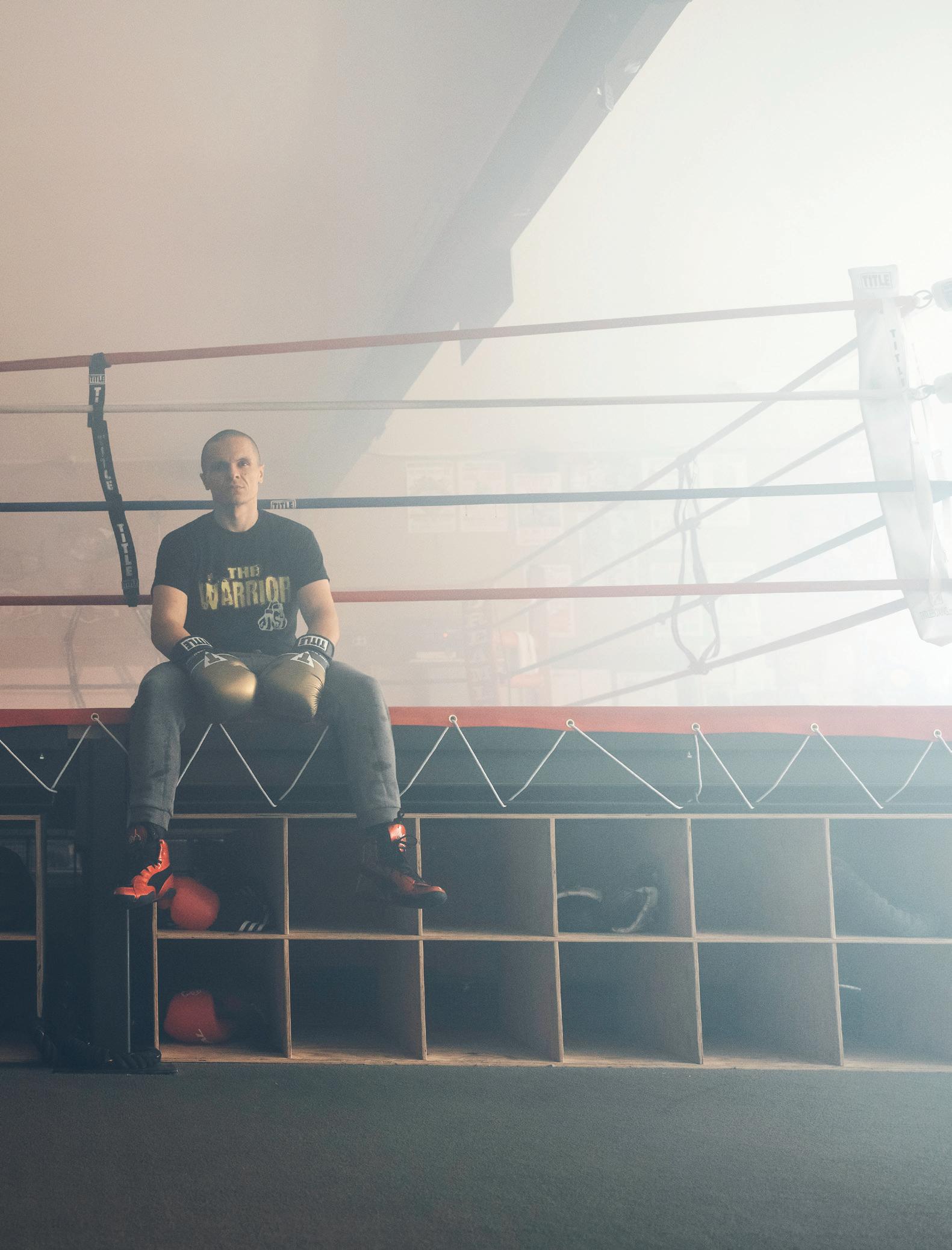
“It’s good here. That’s why I’m here.”
–Chris Washington
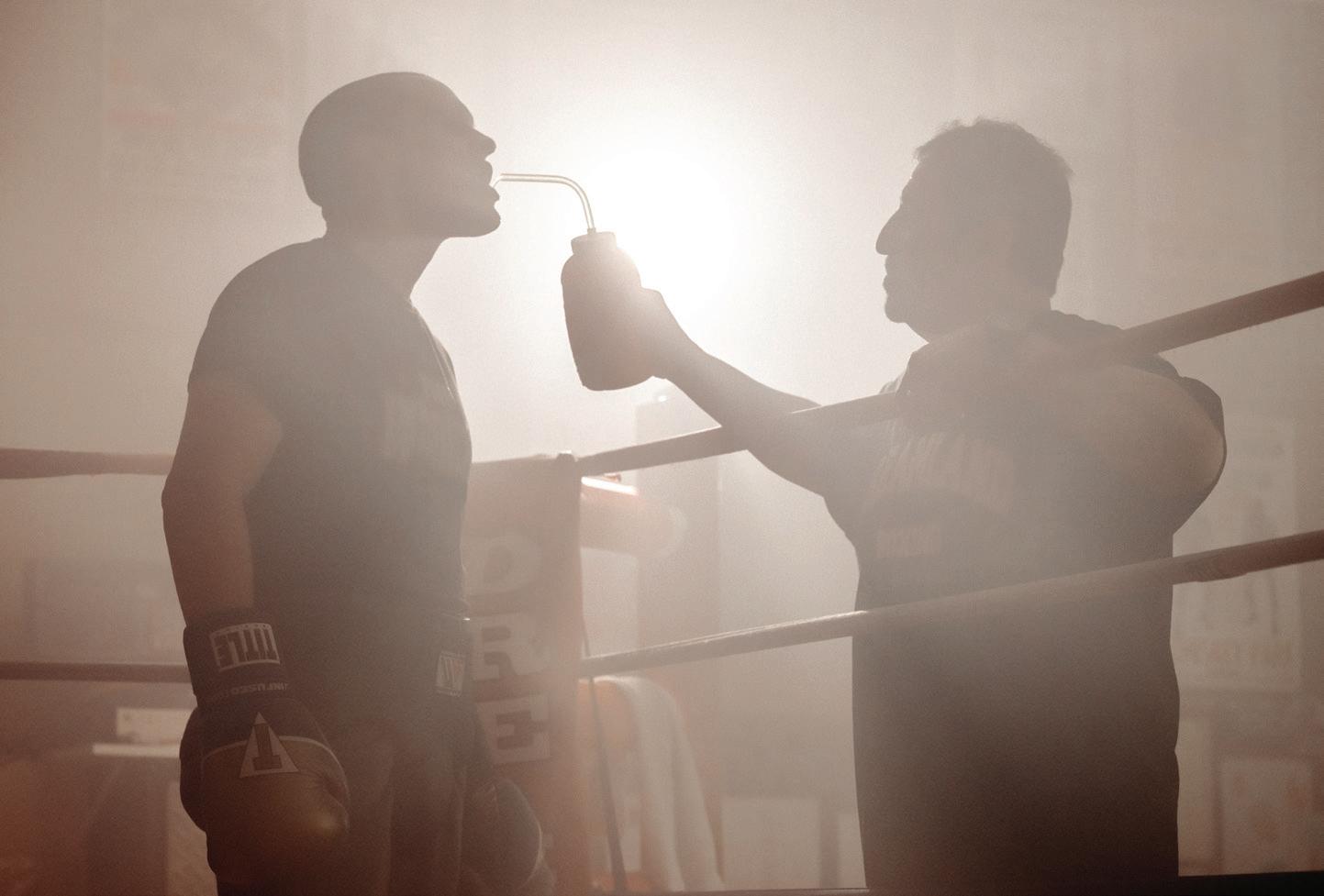

54 Perform 11.3
Membership fees are waived for those without funds. The code of conduct requires members to be respectful, to dress properly, and to use polite language. “If you give them something constructive to do, structure, and opportunities to socialize,” says Neeleman, “it helps them to grow as secure individuals who help others.”
Neeleman says Washington the youth developed into an honorable, respectable, and righteous man as he trained with Sarge. He learned to believe in himself. Both Neeleman and Washington say that Sarge was demanding and tough, yet tender. “Sarge often said,” recalls Neeleman, “whatever you put into it, you get out of it.”
Washington says he’s gotten a lot more out of Dreamland than his love of the sport and his undefeated record. “Whenever I come to the gym,” says Washing-
ton, “I’m always happy, and I’ve learned to talk to people.” He recalls a troubled time when Jesse Huerta was there for him, offering support and good advice.
“It’s like a family,” says Washington. “It was like that with Sarge; it’s like that with Jesse still.”
In 2013, due to an illness, Sarge asked Jesse to run Dreamland’s day-to-day operations and to train its amateur and professional boxers. Huerta had been a competitive boxer in the 1980s. He trained at boxing promoter Joe Gagliardi’s Garden City Boxing Club. It was located in San Jose on Santa Clara Street on the second floor of Hank Coca’s furniture store. In those days, Joe Gagliardi’s fights filled civic auditoriums throughout Northern California, as well as the Circle Star Theater and the Oakland Coliseum Complex, with fans.
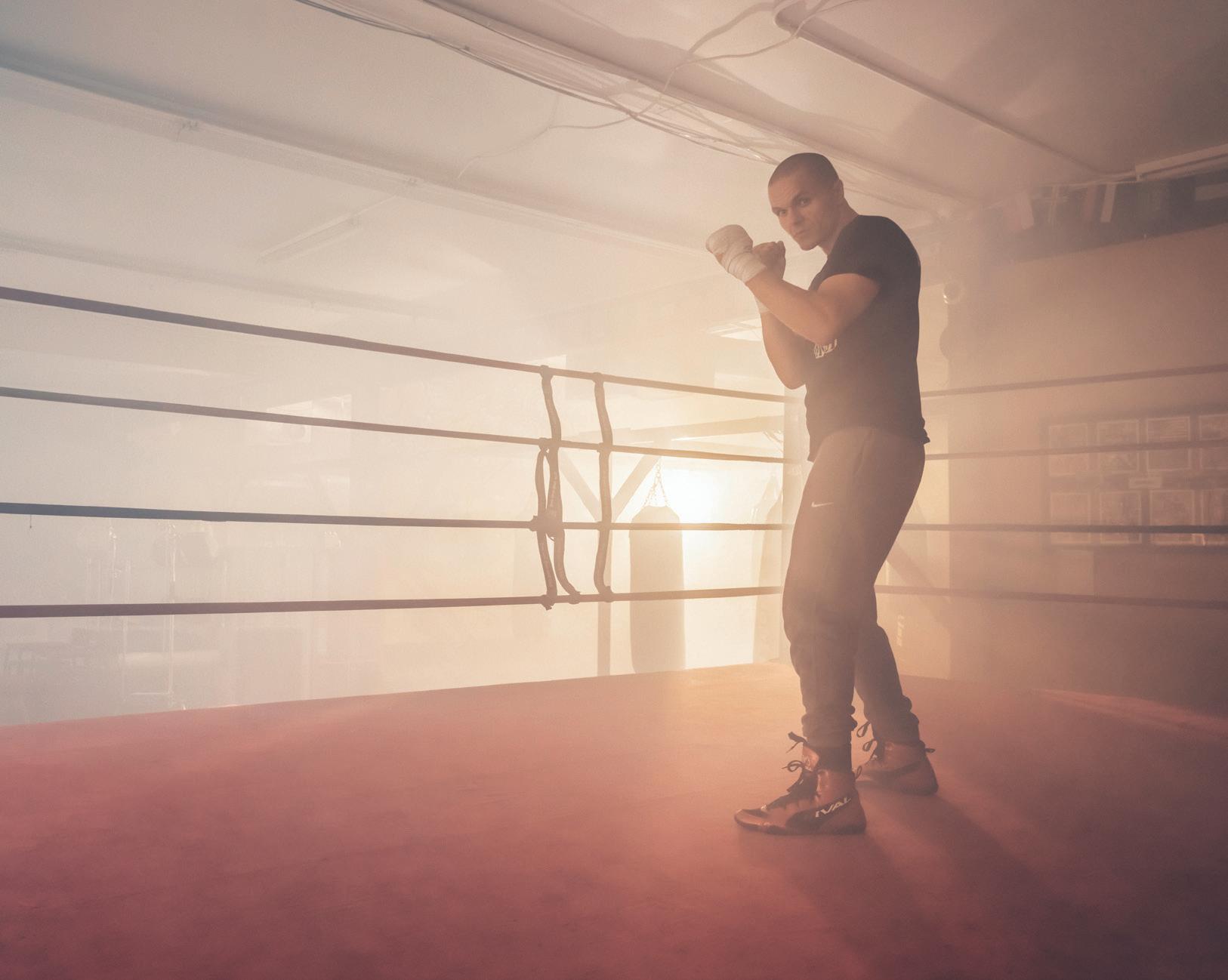
Boxing events at the San Jose Civic Auditorium were stand-
ing room only when Garden City Boxing Club members Albert Romero, Joaquin “Pinky” Rivera, and Stevie “Double Barrel” Romero fought. When Huerta found that he liked training fighters more than competing, he became a professional trainer while he raised his family and worked as a probation counselor at Santa Clara County’s Juvenile Hall. In 2015, after Sarge passed away, the Huertas took over Dreamland as its executive directors and financial managers.
Financial support comes from membership fees, generous members, and TITLE Boxing. A generous TITLE Boxing discount enables Dreamland to provide gloves to those who can’t afford them. TITLE Boxing sponsors the Dreamland Masters World Championship. The master amateur division is for boxers 35 years old or
older. This annual tournament is sanctioned by USA Boxing and the Northern California Local Boxing Commission. It attracts competitive boxers from around the world, and it’s part of Dreamland’s vision of all-ages inclusion.
The Huertas have kept the Neeleman’s vision and have dedicated their lives to preserving it. Jesse Huerta says boxing isn’t a brutal combat sport or a ticket to championship riches. It’s a proven way to guide youths to a positive future. Washington says he initially wanted the glamour and wealth that goes with a boxing championship, but his values have changed. Being a good father, helping the Huertas, and mentoring the youths at Dreamland is now as important to him as earning a championship title. “It’s good here,” says Washington. “That’s why I’m here.” C
55
 Lucila Chavez, San Jose Chapter Lead
Lucila Chavez, San Jose Chapter Lead
Chicks in Bowls SJ Chapter
Skating has quite the quirky history. The first recorded invention of skates was credited to an 18th century instrument maker and inventor. Wanting to make a memorable entrance to a masquerade, he arrived wobbling on primitive metal-wheeled boots while playing a violin—then promptly crashed into an expensive mirror. Skates gained in popularity, and almost two centuries later, the New York Roller Skating Association (NYRSA) converted a hotel dining room into the very first public roller rink. Over the years, the world has seen roller ballets and roller ballroom dancing, roller discos and roller derby bouts. Carhop waitresses of the ’50s wheeled milkshakes to parked convertibles. And German barmaids of the mid1800s strapped on skates, too, traversing the length of sizable taverns to serve beers.
It should come as no surprise, then, that today’s quad skaters continue to comprise a lively, colorful community. Take Chicks in Bowls (CIB), a worldwide collective of skaters (of all levels) with the mantra “shred ’til we’re dead.” This community—founded by a roller derby girl who answers to the alter ego Lady Trample—is dedicated to encouraging and swapping tricks with other quad skaters at meet-ups and making skate parks more inviting for all. To date, CIB boasts over 300 chapters around the globe.
Our local CIB chapter, headed by Lucila Chavez, can be spotted at skate parks across San Jose. One of their hangouts, Lake Cunningham Action Sports Park, is California’s largest skate park, with an array of bowl shapes, rails, and boxes, as well as the world’s longest full pipe. However, Lucila and her crew are particularly fond of Plata Arroyo, a scrappy east side skate park they’ve adopted, with the intention of cleaning away its trash and advocating for upgrades. “It takes all hands to make it beautiful and welcoming for all,” Lucila remarks.
Plata Arroyo’s graffitied bowls certainly differ from the pristine cement slopes at Cunningham, but there’s personality in that paint. Words in complex fonts, cartoon characters, and other tags in bright hues match the splashes of turquoise, canary yellow, and hot pink on laces and helmets sported by CIB skaters.
Besides badass tricks, attire allows skaters another outlet for expression. Skaters have plenty of ways to express identity by person-
57
Written by Johanna Hickle Photography by Arabela Espinoza Facebook CIBSanJoseCA Twitter/Instagram cibsanjoseca

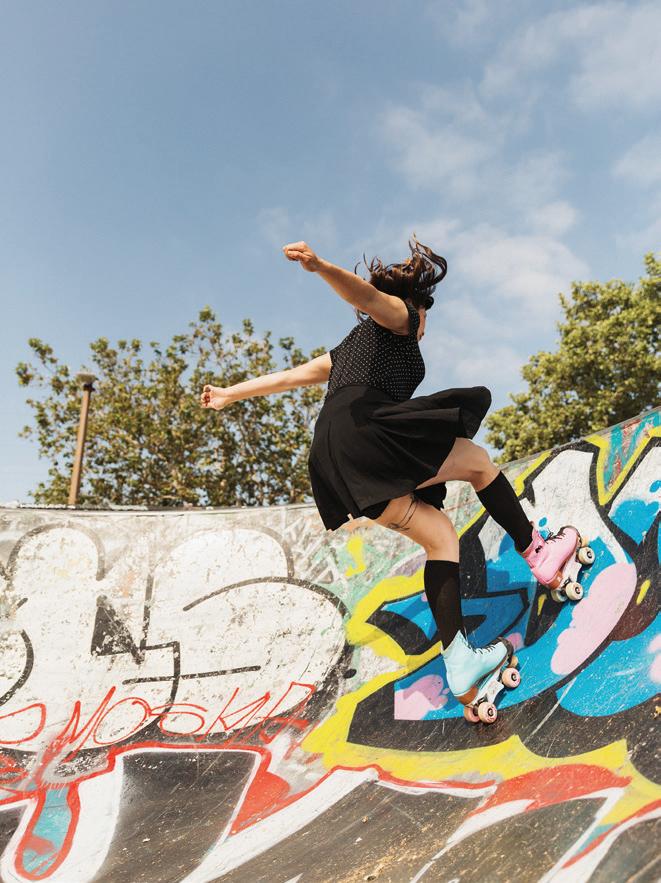

“It’s less intimidating for us to go in large numbers... Especially if girls are on roller skates…they’re gonna get eyed.”
–Lucila Chavez




60 Perform 11.3
alizing their looks—from Hello Kitty skates to heart toe stops, from stickers applied to helmets to pompoms, bows, and wings attached to laces.
Lucila expresses a preference for vintage dresses (with spandex) and bold red lipstick— along with her helmet, elbow pads, wrist guards, and kneepads, of course. “I let [new skaters] know, ‘Hey, safety is sexy. Be sure you tie your shoes. Be sure you’re checking your roller skates. Make sure they spin. This is how you clean them.’”
CIB San Jose, like other Chicks in Bowls chapters, is not only a great support system for beginners, but also for two of the most underrepresented groups at skate parks: women and quad skaters. Lucila says the number of skateboarders and BMX riders catching air on the bowls greatly outweighs the number of quad skaters; it’s also common to see a single woman for every ten men. “It’s less intimidating for us to go in large numbers,” she notes.
“Especially if girls are on roller skates…they’re gonna get eyed.”
When the CIB San Jose chapter isn’t grinding along Plata Arroyo’s edges or kicking up into ho-hos (handstands) on its ramps, they join fellow skaters for San Jose Skate Night. Every first Saturday, streaks of light from participants’ LED wheels zip across streets and sidewalks like urban fireflies. They make quite the memorable sight as they cruise (and sometimes conga) around the city while blasting the Bee Gees and Rick James from a 15-inch speaker on wheels (playfully nicknamed the “music stroller”).
Next time you drive past a skatepark, remember our resident rollers—women who sail and spin across cement as gracefully as ice skaters, women who wear bruises—not with embarrassment, but with the pride of battle scars gained from courageous acts—women who use wheels as a way of welcoming others into community. C
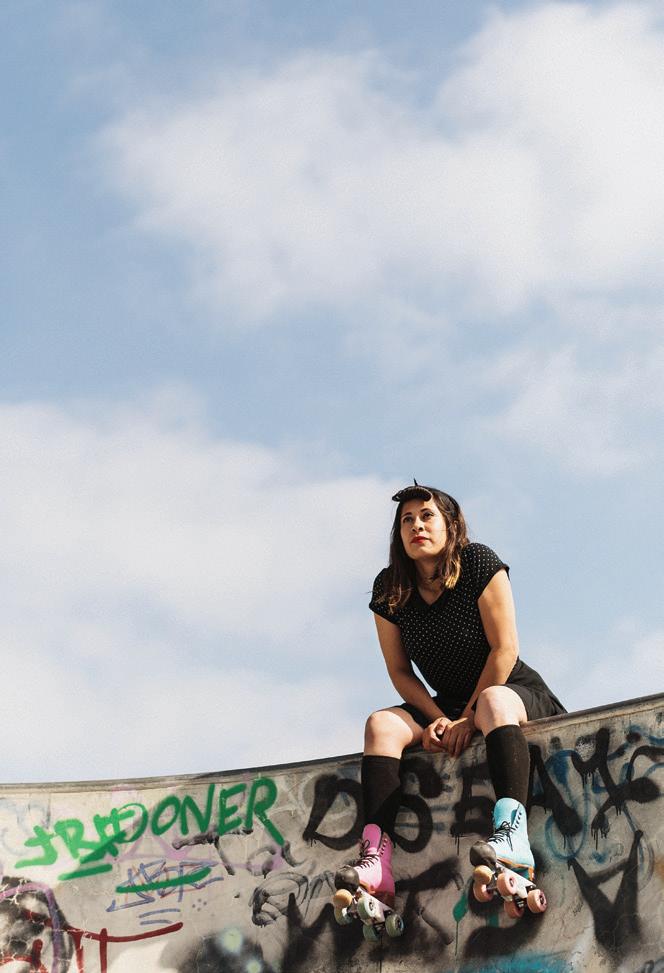
61
“I let [new skaters] know, ‘Hey, safety is sexy.’”
–Lucila Chavez

–Chad Johnston, CEO CreaTV
62 Perform 11.3
“My voice does matter. I’m as important as Wolf Blitzer!”
Written by Kevin Marks
Photography by Daniel Garcia CreaTV
255 West Julian Street, Suite 100 San Jose, CA 95110
creatvsj.org Facebook
creatvsanjose Twitter creatvsj
Chad Johnston CreaTV
What is public-access television in 2019? Is it knitting shows and city council meetings, or is it one of the last remaining elements of a truly local public discourse?
The birth of public-access television as we know it came at an inflection point for American media. The Barry Goldwater–authored Cable Communications Policy Act of 1984 sought to harness the bursting financial power of the fledgling cable TV industry and preserve a fingernail-sized slice of that power and money for local communities. Cable companies had to pony up for the right to dig up public streets to lay their massive networks by effectively financing public studios where anyone could shoot something and throw it up on television. Public access existed before all of this, with centers popping up in the late ’60s and ’70s as literal First Amendment platforms dedicated to truly public-run media, but the 1984 Cable Act gave them built-in funding and staying power. Today, public-access television is surely one of the more unique tributaries of the ever-changing media landscape. In an a la carte, on-demand world where even grandmothers can launch a streaming service, how does public access fit the future?
Chad Johnston, CEO of CreaTV San Jose, sees immense opportunity and a chance to reshape what we’ve come to know as public-access television and transform it into a powerful public tool for local storytelling and media activism.
“Teaching people to tell their story can change their position,” says Johnston. “It empowers you in
a way, where you say, ‘My voice does matter. I’m as important as Wolf Blitzer!’ When that happens to someone, that’s the transformation that I think is relevant and important to doing community work.”

When Johnston looks at his staff and their serviceable arsenal of camera gear and broadcast equipment, he doesn’t see a studio, he sees the beating heart of a nonprofit.
Public-access has long been a stepping stone for people looking to break into network TV. Yet, the prime directive for CreaTV is not as simple as “Come learn how to operate a camera and make a TV show.” Rather, Johnston and his staff are going into underserved communities in and around San Jose to ask the simple but powerful question that the best nonprofits begin with: “What do you need?”
“What are the challenges in your community, and how can technology and media help empower your community?” asks Johnston. “Content may be a piece of that, but there’s probably something deeper in there.”
The power and reach of cable TV has grown exponentially in the last half century, culminating in an all-out war for bandwidth and eyeballs in the postmodern era. San Jose kids today are growing up watching screens and content rather than television. Hard to believe this all started as a way for households in remote communities to get in on the television age.
“Cable TV was originally used largely for rural communities,” says Johnston. “It was born out of
63



“We have to be really responsive and nimble, just like every other media outlet.”
64 Perform 11.3
-Chad Johnston
the fact that they couldn’t get TV reception in the hollers of Appalachia. Suddenly you had fifteen crystal clear channels and no reception issues.”
Times have changed. In 2018, Comcast alone generated close to $90 billion in revenue.
Johnston grew up making his own media and skateboarding videos by borrowing camera gear from his mother, who worked in teacher education at Ohio State. Later he embarked on his current path of digital activism while studying theater and media with a focus on social change at Antioch College in Ohio—a place he describes as “a training ground for activists.” At Antioch, Johnston met Bob Divine, a mentor and professor who championed and opened public-access television studios and viewed them as “electronic greenspaces,” where the community at large could gather, trade ideas, and flex their First Amendment muscles with broadcast technology.
“At some point I realized I couldn’t just be an artist,” says Johnston. “I got nagged enough.” Becoming a responsible artist wasn’t just something
his professors taught at Antioch, it became something that Johnston sought to embody, and it informs the vision of CreaTV. In the often anemic, sleepy world of public-access television, it just might be the thing that helps CreaTV weather the changing climate of media and thrive in the emerging entertainment landscape.

“I’m always telling our board and others in our field: ‘I don’t know what media is going to be. But what I do know is that if we’re going to play in that space, we have to be really responsive and nimble just like every other media outlet,’” shares Johnston. “This is the most exciting and terrifying time to do what we do.”
Johnston and CreaTV are poised to launch their Summer Documentary Institute this year, where young people are invited to tell the stories that matter to them and their communities. Through this and other programs like it, CreaTV looks to cultivate a true electronic greenspace for San Jose and redefine what public-access television looks like in the digital years to come. C
65
DJ ThatGirl
WITH YEARS ON THE SCENE AND A WEALTH OF CONNECTIONS, DJ THATGIRL IS NOW HARNESSING HER NETWORK TO EMPOWER FEMALE DJS THROUGH RECENTLY LAUNCHED DIME TALENT GROUP.
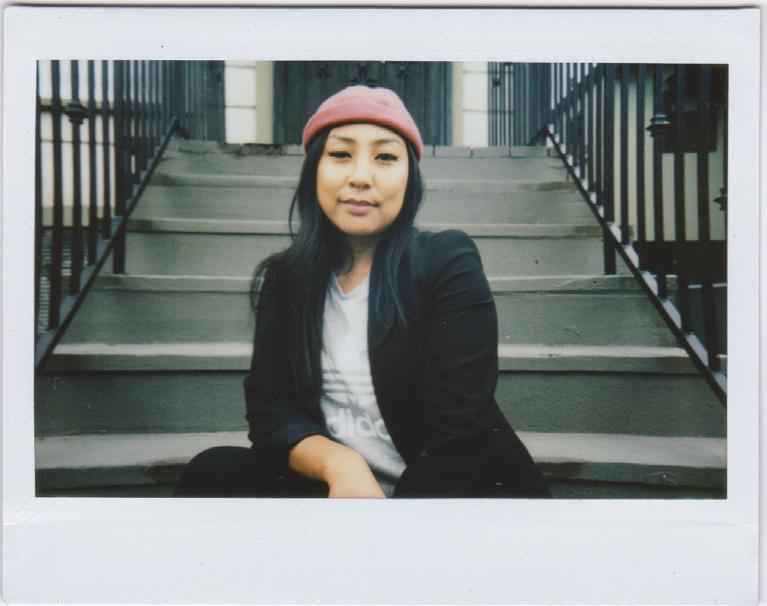
66 Perform 11.3
Written by Brandon Roos
Photography by Polaroid Jay djthatgirl.com dimetalentgroup.com
Melanie Panergo caught the DJ bug at 16. At a rave in Oakland, among 10-foot-tall lava lamps, she saw a set by DJ Qbert and Kid Koala, two turntablist legends who that night challenged her notion of just what was possible on the decks. Setting the scene, she says the two “weren’t specifically playing to dance. They were creating a musical collage. Kid Koala [was playing] old instructional records, and Qbert was laying breaks on top of it. I thought it was amazing.”
Soon after, she asked her father for turntables, and he agreed to buy her a setup if she earned straight A’s, a promise she dutifully held up. Once secured, though, she’d skip school with her friends to grab more practice time while her parents were at work. Thanks to an ID she obtained from a brother’s friend who was a bouncer, she also got an early taste of the nightlife scene in her hometown, San Jose.
Through contacts at parties like the now-defunct Stank at the former Agenda Lounge, she landed her first event: a monthly gig at the SoFA gallery MACLA. She overheard patrons say “there’s that girl” enough that it spawned her DJ name. Panergo soon became a regular presence at Universal Grammar events like Dime, the Changing Same, and Live at the Pagoda, parties where she opened for Yuna, Aloe Blacc, and KRS One.
“I’ve always been open format, because I never really stuck to one thing. Hip-hop was definitely a foundation, but I was always digging for other sounds,” she says of her selection, eclectic yet often polyrhythmic and distinctly danceable, a hallmark from a background in DJ’ing breakdancing events, where she’d have to dispense heavy grooves at a rapid-fire pace.
ThatGirl has since expanded her reach throughout the Bay and is likely best known as a member of the Peaches crew, an all-female DJ contingent whose weekly party in San Francisco ran for a decade.

67
DIME: (top to bottom) Ladyfingaz, Jenicyde, Deeandroid, DJ Umami, Pony P, ThatGirl
Facebook beatsbythatgirl Instagram djthatgirl dimetalentgroup Twitter djthatgirl
“Someone coined me ‘the bridge,’ because, eventually, I would bring a crowd of people who were just open, regardless if it was a gay or straight party. I thought that’s pretty empowering that I have this niche where I can bring together those worlds.”

68 Perform 11.3
-Melanie Panergo
“At the time, it was rare to see a female DJ,” she says of the party’s early days, adding that Peaches continued the work of OGs like DJ Zita and the late Pam the Funkstress, whose Everlasting B.A.S.S. party aimed to provide more visibility and exposure for female DJs and creatives. “We saw the importance of banding together and creating that representation for ourselves.”
Since the crew stepped away from their weekly, Panergo has largely shifted her focus to wedding and corporate gigs; at the end of last year, she found a way to merge her budding success in this space with her vision to provide more opportunities to female DJs. DIME Talent Group was born. “I think, naturally, with all my professional and artistic experience, it’s led me to be in a position to funnel more opportunities to women,” notes Panergo. DIME’s talent pool, rich in experience, includes longtime friend Jenicyde and her Peaches crew counterparts, including DJ Umami, Lady Fingaz, and Lady Ryan.
Though DIME is just getting started—the collective was founded at the tail end of last year—she’s hoping her efforts will help spread the notion that the DJ booth, not just the dance floor, is a space where all are welcome. It’s a deeply embedded value for Panergo, as she’s encountered pushback as both a woman and someone who identifies as queer. She’s been denied the decks at events by men, been asked by promoters if her brand is going to scare away the male clientele, and even been asked if her following might compromise a safe space.
Yet, in turn, a friend provided the perfect nickname, given the wide variance of audiences she’s been able to perform for. “Someone coined me ‘the bridge,’ because, eventually, I would bring a crowd of people who were just open, regardless if it was a gay or straight party,” she says. “I thought that’s pretty empowering that I have this niche where I can bring together those worlds.”
Now Panergo isn’t only bridging together different worlds through her mixing. She’s creating opportunity with a purpose in mind—and shifting perceptions one dance floor at a time. C


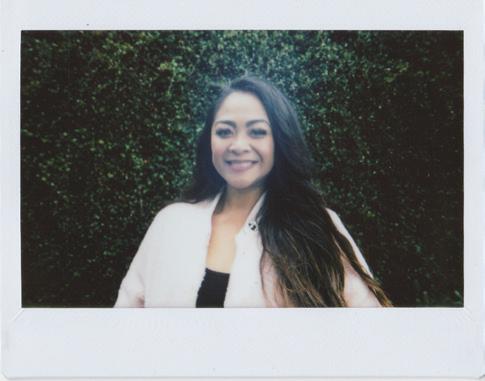
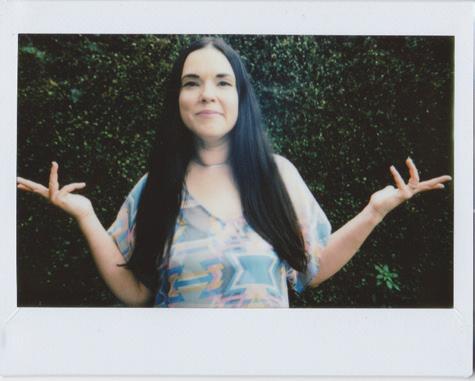 LadyfingazJ
Jenicyde
LadyfingazJ
Jenicyde
69
DJ Umami Pony P
Wine Makers
Poised high above the Pacific Ocean and the San Francisco Bay, Santa Cruz Mountains vineyards have come of age in “splendid isolation.”
 Written by Thomas Ulrich
Photography by Daniel Garcia
Written by Thomas Ulrich
Photography by Daniel Garcia
Poised high above the Pacific Ocean and the San Francisco Bay, Santa Cruz Mountains vineyards have come of age in “splendid isolation.” Among the first American Viticultural Areas (AVA) that the Bureau of Alcohol, Tobacco, and Firearms established along geographical—not political—lines, the AVA traverses both sides of a mountain range that stretches from Woodside to Watsonville.
With nearly 1,200 acres of cabernet sauvignon, chardonnay, and pinot noir grapes under production, vineyard managers cultivate their interpretations of Burgundy and Bordeaux varietals—vibrant fruit with a bright acidity that delivers remarkably expressive wines. They’ve traded abundant yields that require synthetic fertilizers to enrich the soil and harsh chemicals to eliminate pests for sustainable harvests that embody the climate, geography, and soil of their hillside vineyards.
Climate defines this appellation. Its official boundaries approximate a fog line that surrounds the mountain range. Wedged between two bodies of water, the AVA extends from the summit to several hundred feet above sea level on both sides of the mountain. Along the mountainside nearest to the ocean, morning fog, afternoon sun, and sea breezes lengthen hang time, perfect for ripening cool climate varietals like chardonnay and pinot noir. Along the bay side of the mountain range, warmer days, hillsides that block the wind, and cool nights gently ripen cabernet sauvignon.
The AVA straddles the San Andreas Fault. Where the North American and the Pacific
plates collide, the earth fractures. To the east lies a mixture of basalt, chert, greenstone, limestone, sandstone, schist, and shale. To the west lie remnants of an ancient continental crust laden with volcanic basalt and marine sedimentary rock. The confluence of climate, geography, and soil delays harvest, adding color, complexity, and structure to the wine. Welldrained, infertile soil reduces yield, concentrating aromas and flavors.
“These vines produce the highest quality grapes, the most balanced fruit,” Javier Tapia Meza from Rhys Vineyards reasons, “when the vineyard reaches a natural equilibrium.”
Tapia, like other grape growers of the Santa Cruz Mountains, has combined organic standards with a kinship to Earth that has transformed American viticulture from an industry where vineyard managers flooded vines with water, fertilizer, and pesticides to a marketplace where sommeliers tout the character of each vineyard.
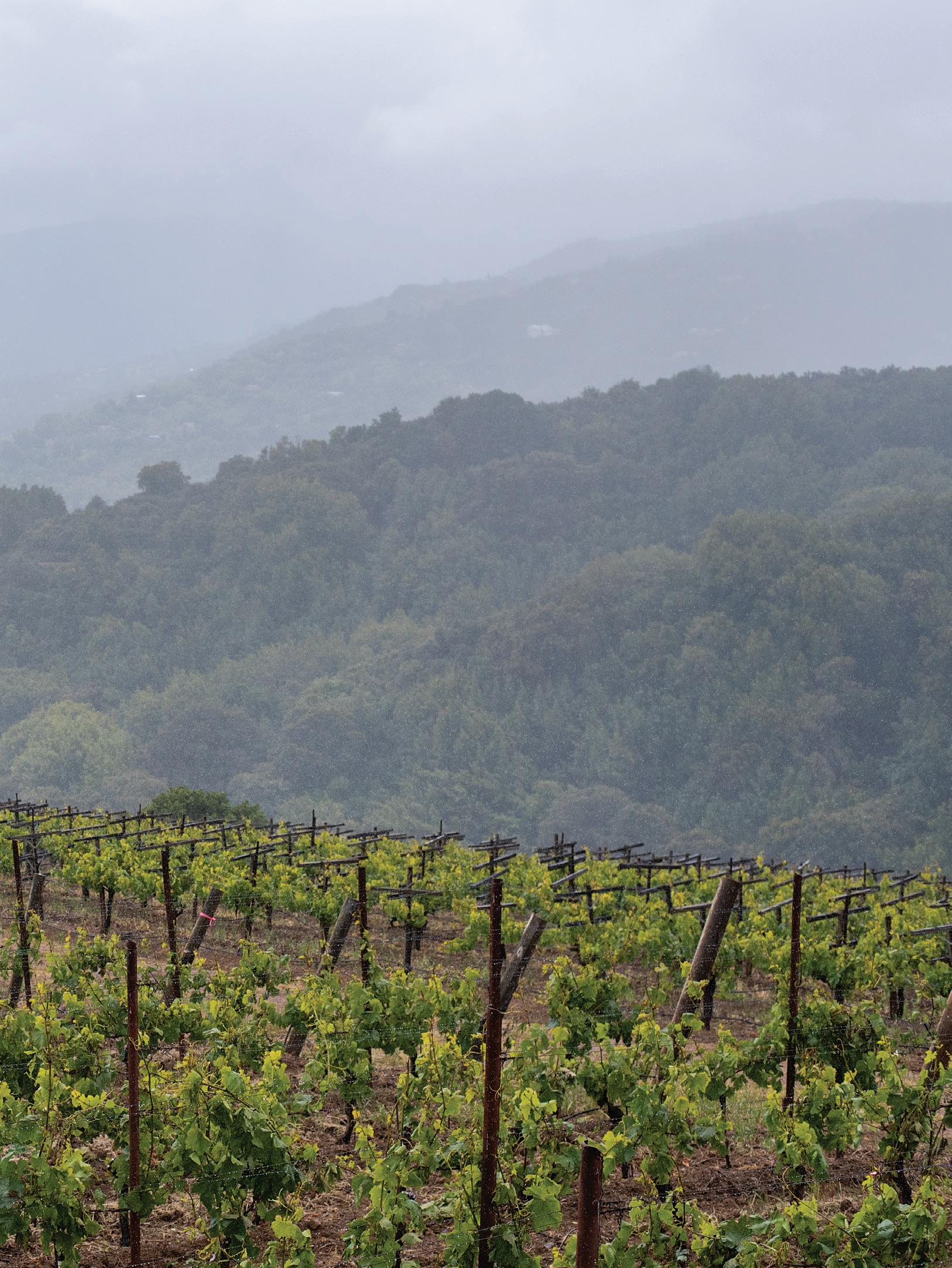
Santa Cruz Mountains vineyards deliver balanced, complex, nuanced wines with just enough coaxing from the vineyard manager and winemaker. Dave Gollnick from Mindego Ridge, Richard Pascale from Pescadero Creek, and Jeffrey Patterson from Mount Eden have elevated their mountain vineyards to field stations where they can explore the region’s character—its sense of place.
Here’s some of what each vintner has discovered about the nature of the land they cultivate.
MOUNT EDEN VINEYARDS
The Santa Cruz Mountains AVA is twice the size of the Napa Valley AVA. Yet the 1,540 acres of grapes under cultivation across the 480,000-acre mountain range rival the holdings of a single midsized Napa Valley producer. “Unlike the densely planted regions of Bordeaux, Burgundy, and the Napa Valley, mountain vineyards are separated by miles of forest,” Jeffrey Patterson explains. “With our topography and the distance between vineyards, expressing differences in exposure, slope, soil, and weather (or terroir) comes naturally.”
From an exposed mountaintop 2,000 feet above sea level, his estate chardonnay and pinot noir vineyards endure cool, fog-free days with little chance of a heat spike during the summer or fall. The maritime climate ensures that the grapes will ripen slowly and evenly, producing balanced, nuanced, long-lasting wines.
A winemaker who values the vineyard as much as the winery, Patterson grows grapes and makes
wine with a light touch. Sufficient rainfall and well-drained soil with enough holding capacity to retain some moisture during the summer months permits him to farm without irrigating the vineyards. The vineyard team gathers and sorts grapes by hand with an eye for selecting perfectly ripened fruit. He harvests to taste. In the winery, he relies on native yeast to ferment the juice and fills fermentation tanks with red grapes by hand. He does not fine or filter the wine. “With a pure expression [of the vineyard and the winery] comes a true vineyard wine,” he says.
Since 1981, Jeffrey and Ellie Patterson have made wine with grapes from the same vineyards, following many of the same farming and winemaking practices, with one goal in mind. “At its essence, wine is a snapshot of the grape variety, exposure, slope, soil, sun, wind, and weather for that vintage,” he says. “As a vineyard manager and winemaker, I never want to get in the way. Let the vineyard speak for itself.”
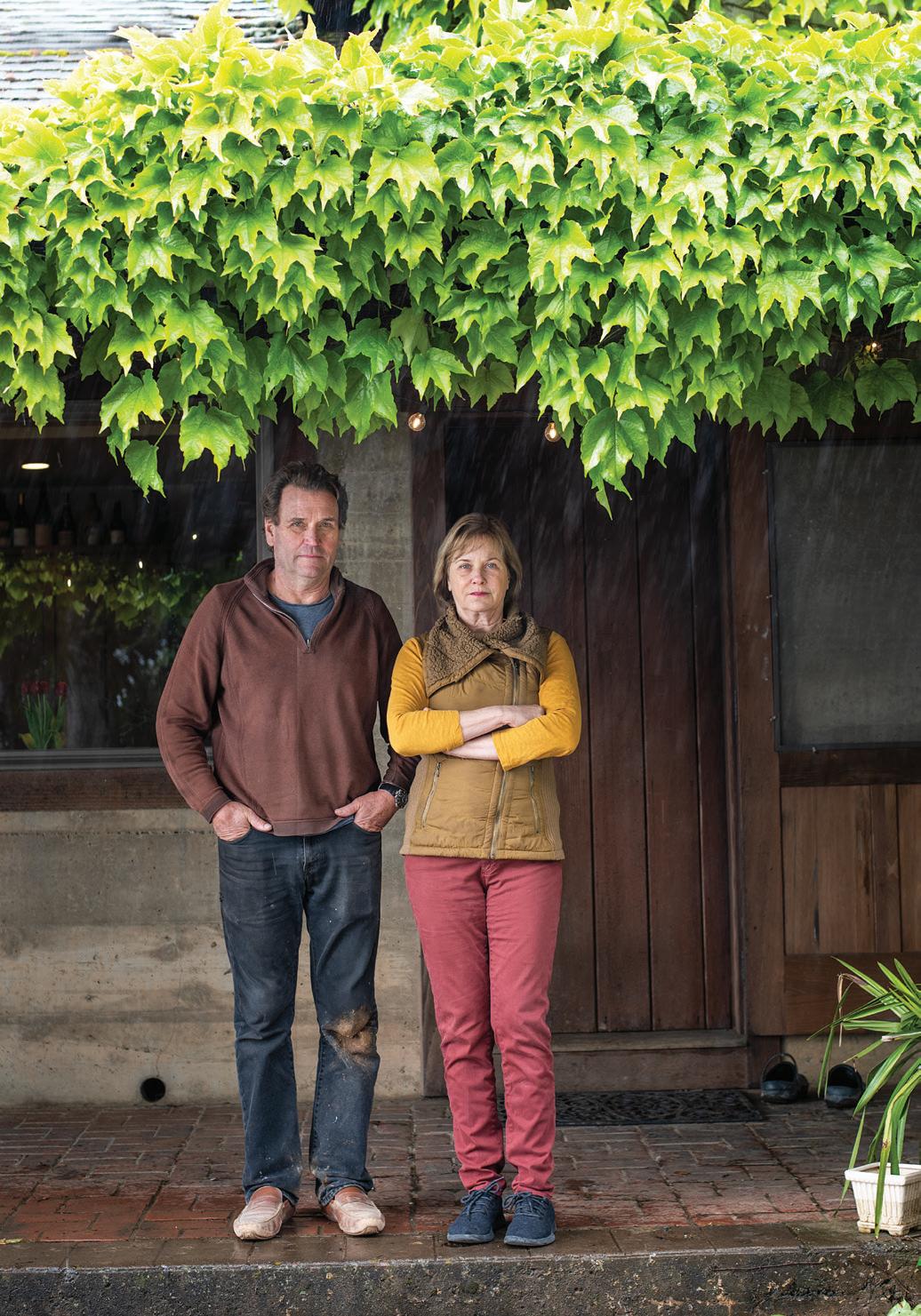 Jeffery Patterson
Mount Eden Vineyards mounteden.com Visit website for touring, tasting, and purchasings. Facebook mounteden Instragram mountedenvineyards
Jeffery Patterson
Mount Eden Vineyards mounteden.com Visit website for touring, tasting, and purchasings. Facebook mounteden Instragram mountedenvineyards
72 Perform 11.3
Ellie Patterson
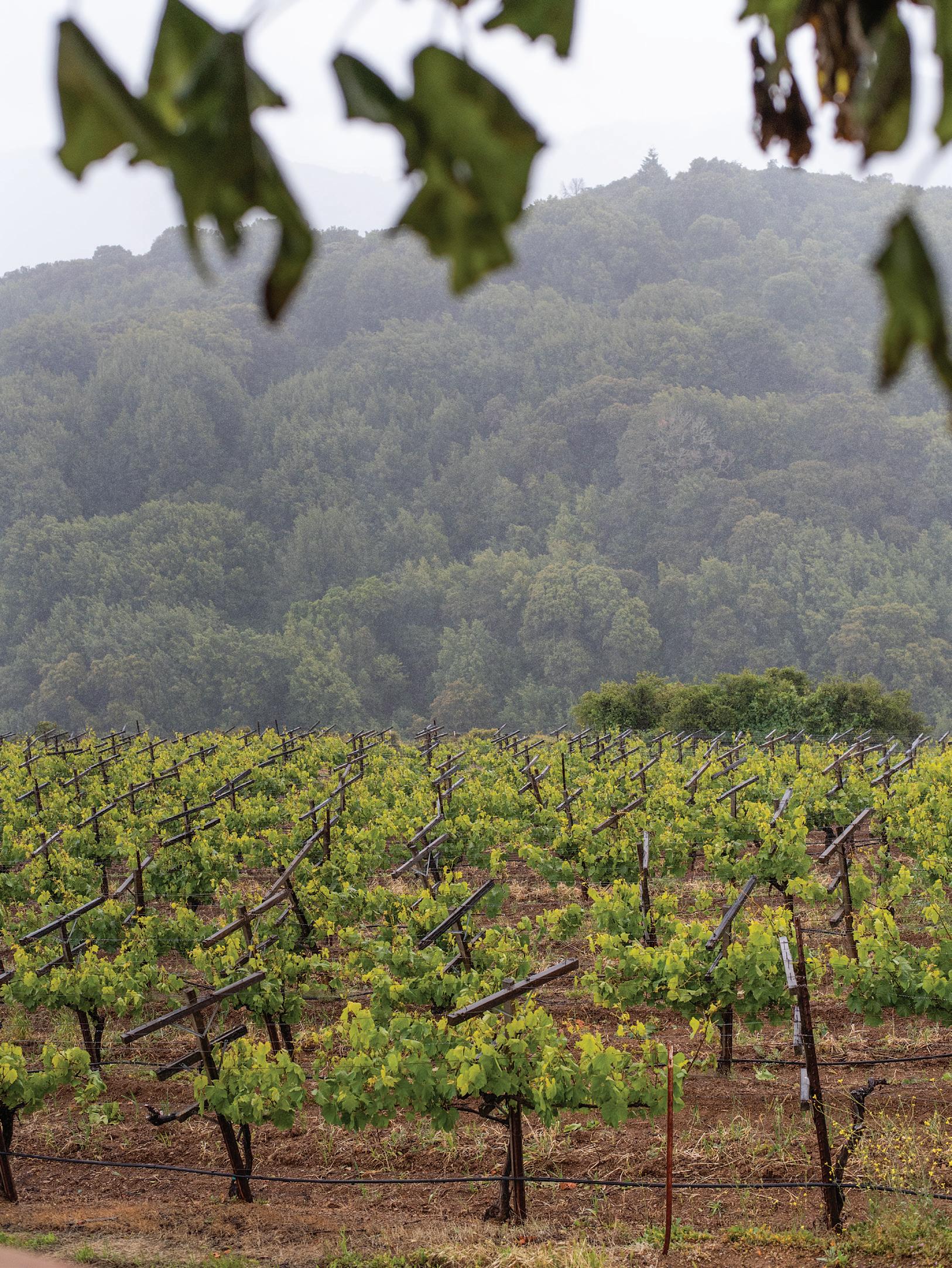
“Let the vineyard speak for itself.”
– Jeffrey Patterson

“We tread lightly in the vineyard and the winery.”
– Dave Gollnick
MINDEGO RIDGE VINEYARD
Dave and Stacey Gollnick cultivate chardonnay and pinot noir grapes from hillside vineyards perched 1,000 feet above sea level and eight miles from the Pacific Ocean. Morning sun and onshore breezes favor cool-climate grapes. Warmer days promise ripe, sweet fruit. Cooler nights help grapes retain acidity. Together, they deliver wines with subtle flavors and aromas, bright acidity, and a moderate amount of alcohol.

Mindego Ridge is more than the sum of its parts. Its microclimate and soil combine to accelerate growth. Warmer daytime highs heat silty clay loam to higher temperatures, fueling the development of stems, leaves, tendrils, and flowers. The vineyard crew shapes the canopy by hedging vines and selectively removing lateral shoots to induce each vineyard block to ripen uniformly. The filtered sunlight that the crew leaves behind balances acidity, sweetness, and texture.
“We tread lightly in the vineyard and the winery,” Dave says.
They cultivate the vineyard thoughtfully, dry farm, and plant a cover crop of oats, vetch, magnus, and fava beans between rows to extract nitrogen from the air, attract beneficial insects, and
limit erosion from hillside vineyards during heavy rain. They harvest grapes at night from individual blocks. Holding the temperature to 50 degrees Fahrenheit, they deliver intact clusters to the winery that are cool, fresh, and unbruised.
For winemaker Ehren Jordan, ripeness reaches beyond Brix, pH, and titratable acidity to the maturity of tannins and other compounds that add color, taste, and texture to wine. He strives to bottle an honest expression of each vineyard block.
Jordan ferments hand-picked and sorted grapes with native yeast. Natural fermentations produce much more complex wines than inoculated fermentations because the microbes driving fermentation are so diverse.
Not one to conceal the essence of the chardonnay or pinot noir grapes that the vineyard crew has so carefully cultivated, he does not add nutrients or enzymes to the fermentation. He does not douse the grapes with sulfur dioxide at the crush pad or in the cellar, but adds it before bottling to stabilize the wine. “Climate, soil, aspect, rootstock, clones, and attention to detail in the vineyard create a signature that I can translate into a complete wine—wines that are unmistakably chardonnay and pinot noir, yet reflect the vineyards where they are grown,” he says.
75
Dave Gollnick
14598
mindegoridge.com Social Media mindegoridge
Stacey Gollnick
Mindego Ridge Tasting Room
Big Basin Way, Ste. A Saratoga, CA 95070

“We have a deep commitment to the land. We want each vintage to express our terroir.”
-Richard Pascale
Image by Robb McDounough Jr.
Ann Carol Brown and Richard Pascale farm a hillside vineyard that straddles the fog line five miles from the Pacific Ocean. Morning fog, sunny afternoons, onshore breezes, late afternoon fog, and a weathered soil make this two-acre vineyard an ideal place to grow their Old World interpretation of Santa Cruz Mountains pinot noir.
“Paralleling the temperature profile of Burgundy, mornings start at 50 degrees Fahrenheit, climb to 80-85 degrees Fahrenheit by noon, then drop off sharply by 4pm as the fog rolls in,” says vineyard co-owner Richard Pascale.
They’ve paired 5,000 low-yielding Burgundian clones with American rootstock. “We prune the vines, selecting two to three bunches per cane, harvesting only the most perfect clusters of fruit,” Brown says.
Lower diurnal and ambient temperatures near the coast preserve acidity, producing crisp, bright fruit. Warm days, cool nights, and ocean breezes favor vines that bear small berries with complex flavor and a deep red color.
Brown, Pascale, and winemaker Nathan Kandler are traditionalists at heart. Whether they are cultivating Dijon clones, chilling newly harvested grapes to extract color and flavor, or aging pinot noir in three-year-old French oak barrels, they are bound to Old World tradition. Kandler ferments freshly crushed grapes with native yeast and bacteria. Unlike commercial fermentations that can produce flavor spikes, natural fermentations create balanced, silky, delicate wines that express the character of the vineyard. “Our goal is to transmit flavors that come from the vineyard rather than the winery,” he says.
Kandler does not hasten primary fermentation with nutrients and enzymes. While he adds sulfur dioxide after secondary fermentation, he does not fine or filter the wine.
In the tradition of the great French chateaus, it’s the place, not the person. “I am not trying to put my stamp on the wine,” he says. “As a winemaker, I just want to interpret the site.” C .

77
PESCADERO CREEK VINEYARD
Richard Pascale
Social Media pescaderocreekvineyard
Pescadero Creek Vineyard pescaderocreekvineyard.com
Steeped Coffee
If you’ve ever been camping or backpacking and wanted to start your morning with a fresh cup of coffee, there have historically been a couple of options. The easiest way is to boil water with a stove and shake some instant coffee into it, but this notion is cringe worthy to coffee aficionados. Such connoisseurs may prefer to take a French press with them, but this option also isn’t ideal. Size and weight make such coffee devices difficult to carry, and they’re also messy to use on the go. While this may sound like a First-World problem, the reality is that coffee is a massive industry, and developing ways to make it transportable have led to some less-than-ideal solutions that have frequently had a negative impact on the planet.
Thanks to Steeped Coffee, a startup based in Scotts Valley, there’s now a third option for anyone who wants freshly brewed coffee on the go. Steeped Coffee is a portable pour-over style coffee in a compostable pouch reminiscent of a teabag. It’s a simple concept powered by surprising innovations at every level and driven by a love of the specialty coffee Santa Cruz is known for.
Steeped Coffee’s founder and CEO is surfer and entrepreneur Josh Wilbur, who became obsessed with the idea seven years ago while trying to pack his favorite coffee for a trip to visit family. In a stroke of inspiration, he stapled some grounds into a crudely-made pouch of filter papers to test the idea out.
“It turns out it was a lot more complicated than I thought it would be,” he explained. “It’s taken years of innovation, trial and error, and R & D to get this product to the point where it’s barista approved.”
The barista approval is a key element of Josh’s vision. His goal for Steeped isn’t just to make a convenient coffee product for hikers, but to transform the single-serve coffee market with an alternative to plastic K-Cups—with quality and taste being key differentiators. Most specialty roasters don’t offer single-serve coffee because pre-grind-
Written by Brad Sanzenbacher Photography by Avni Levy Steeped Coffee steepedcoffee.com Social Media steepedcoffee
Santa Cruz’s Steeped Coffee brings barista-approved coffee anywhere, with a twist that might help save the planet.
78 Perform 11.3
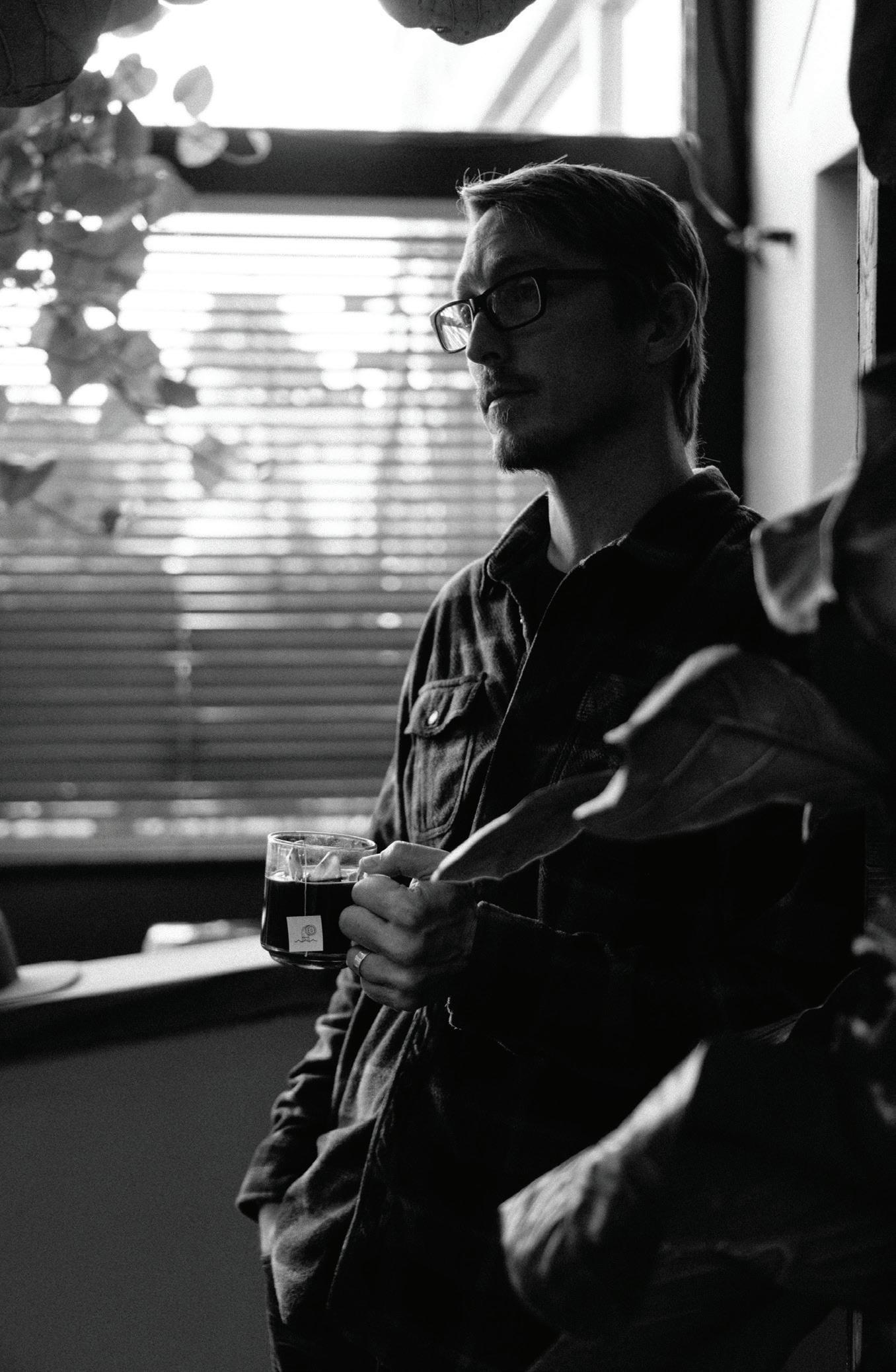 Founder Josh Wilbur
Founder Josh Wilbur



Beach Day Beach Day
 Photography by Vivian Sachs
Wardrobe by Evaro Italia
Photography by Vivian Sachs
Wardrobe by Evaro Italia


 Venice lace top $420; wide leg organza trousers $320
Nasty Girl crop top $24 ; wide leg organza trousers $320
Venice lace top $420; wide leg organza trousers $320
Nasty Girl crop top $24 ; wide leg organza trousers $320

Guipure lace top $690; high-low midi skirt $480
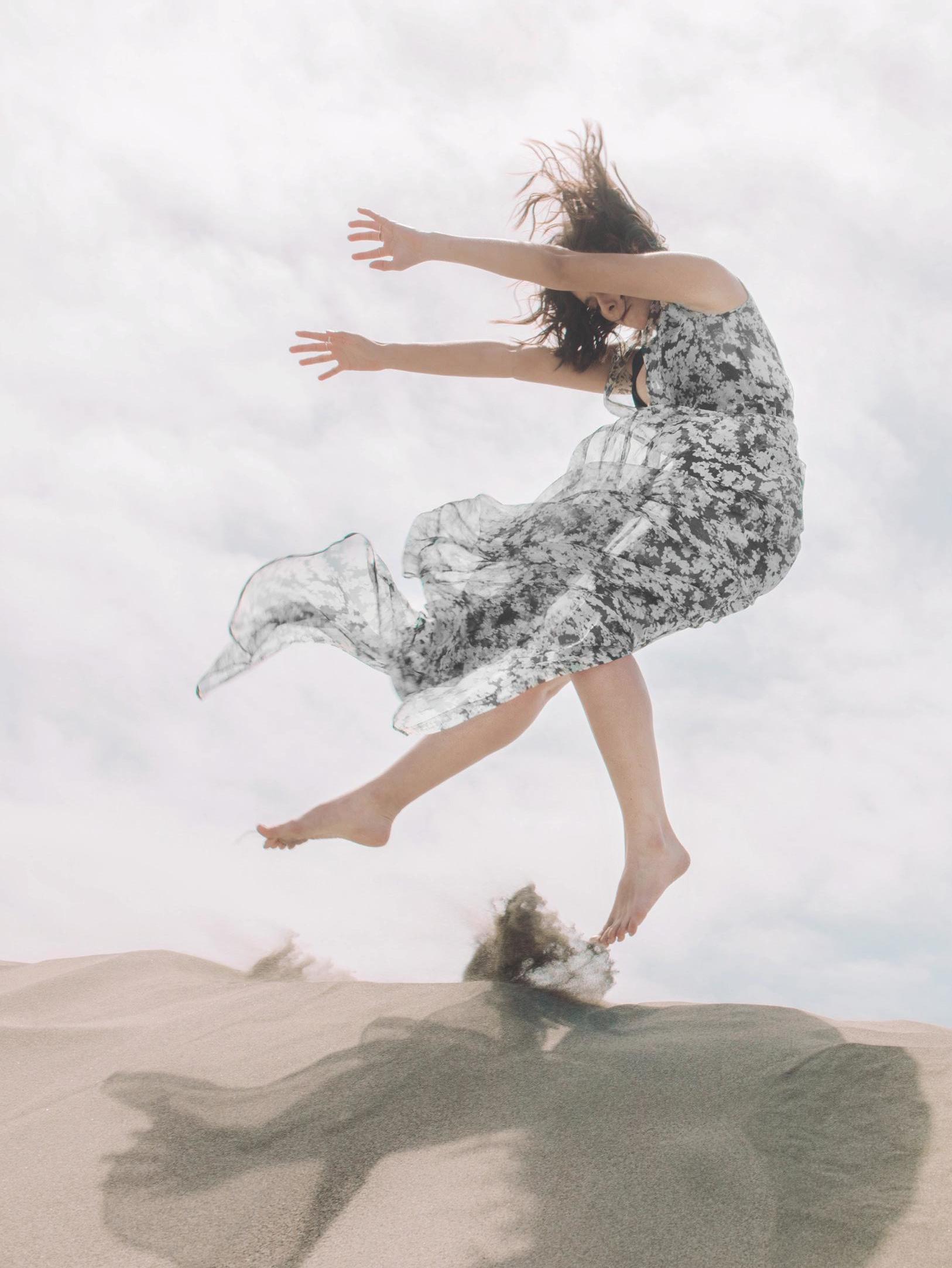

 Black and white striped deep V mini dress $620
Black and white striped deep V mini dress $620
Photography: Vivian Sachs @vivysachs
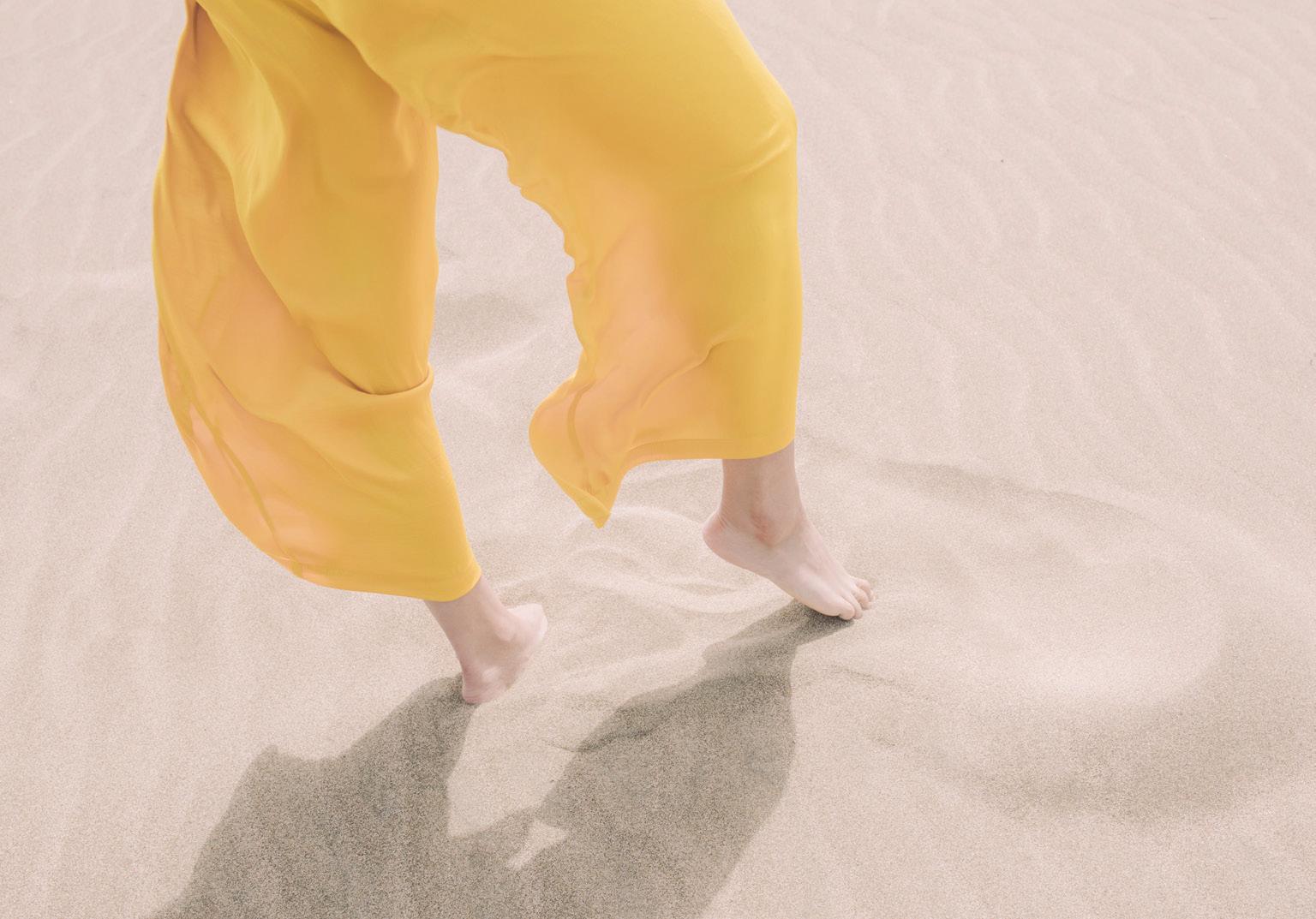
Wardrobe: Evaro Italia @evaroitalia
Models: Linda Mai @omglmg Dennese Rodriguez @neesie_3
Talent Agency: JE Model Management @jemodel
Make-Up + Hair: Mayjoice Maniego @missjoicey
Stylist: Adrea Cabrera @adreacabrera
Video by EJ Casabar @ej.ski
Video Produced by Studio krō @studiokro
Image Remixes by Le Corbeau @lecorbeau.club
Production Coordinator: Kristen Pfund @contentmag
 Black and white striped sequin crop top $380 with Oysho yellow trousers
Oysho yellow satin trousers, $45.00
Black and white striped sequin crop top $380 with Oysho yellow trousers
Oysho yellow satin trousers, $45.00
 Mermaid sequin dress $1100 with zip up hooded sweatshirt (not Evaro)
Mermaid sequin dress $1100 with zip up hooded sweatshirt (not Evaro)
12
CONTENT CALENDAR
JULY/AUG
#ContentPick
04
4th of July Fireworks
Rotary Club of San Jose invites you, your family, and your friends to enjoy world-class fireworks display at Discovery Meadow in downtown San Jose.
7/4 Fireworks Approx. 9:30pm Discovery Meadow rotaryfireworks.org
02
Summer of ’19 Art Gallery 24 opens a show of all new art on July 2. Forty-seven artists, many different mediums and styles.
7/2–9/29 Gallery 24 Los Gatos lggallery24.org
Art This Way: Sociology + Food
Explore the exhibition Rina Banerjee: Make Me a Summary of the World through the perspective of a sociology professor and culinary expert.
7/9, 12:30pm San José Museum of Art sjmusart.org
11
Art After Dark
The ICA’s monthly after-hours hangout. Bring your friends, grab a drink, and enjoy art and music. Free admission.
7/11 7pm–10pm SJ Institute of Contemporary Art sjica.org
WEEKLY
MON 7PM–9:30PM
Red Rock Open Mic Night
A family-friendly open mic experience that welcomes people of all talents to share and perform their art.
Red Rock Coffee redrockcoffee.org
TUES 7PM–10PM
Caffe Frascati Open Mic Open Mic Night! All styles welcome. Happy Hour all night.
Caffe Frascati caffefrascati.com
Concert in the Park Sizzle with Orquesta Latin Heat for a night of music. Bring a lawn chair or picnic blanket and your dancing shoes as the exhilarating rhythms are sure to get you on your feet.
7/12 6:30pm Central Park Pavilion, Santa Clara bit.ly/OLHSC19
12 Architecture & Drawing Exhibition
Local artists celebrate Architecture through a range of disciplines. Show judged by Michael Azgour, artist and Stanford adjunct lecturer, architectural design.
7/12–7/27 Opening Reception, 7/12 5:30-8pm pacificartleague.org
16
SPUR Drinks and Discourse: Content Magazine Grab a drink and hear from people shaping the region’s future. This month Daniel Garcia shares his thoughts about how San Jose is changing and the power of art as a force to build community.
7/16 6pm SPUR San Jose bit.ly/SPUR71619
17
Illusions of the Passed: A Theatrical Séance Aiden Sinclair Seen on Penn & Teller Fool Us, Master Magician Aiden Sinclair presents an exclusive evening of entertainment.
7/17 7pm & 9pm Winchester Mystery House winchestermysteryhouse.com
18
Beta Space: Pae White
Internationally renowned artist Pae White will present a compendium of new works and recent installations for the sixth iteration of SJMA’s exhibition series Beta Space
7/18–1/19 San José Museum of Art sjmusart.org
18
Cabaret City Lights presents the original 1966 version of the musical Cabaret 7/18–8/25 City Lights Theater Company cltc.org
WED 9PM
The Caravan Lounge Comedy Show
Comics from all over the Bay Area and the world perform, hosted by Ato Walker. The Caravan Lounge caravanloungesanjose.com
THURS 5PM–9PM
Taylor Street Market
For food trucks, breweries, performers, & San Jose Made vendor lineups. (Thru Aug.)
Gordon Biersch Brewery mvblfeast.com
FRI 10AM - 3PM (Begins May 3)
Downtown Farmers’ Market
Fresh seasonal produce, freshcut flowers, gourmet foods, artisan booths, and great people-watching. San Pedro Street sjdowntown.com
SAT 6pM - 8PM
SJ Boom Box Live performances in the park for the entire family. Enjoy an evening of live music curated by San Jose Jazz sanjosejazz.org/events
90 Perform 11.3
09
19 Music in The Park: Ozomatli
Ozomatli brings their melting pot of global sounds and rhythms, an intoxicating blend of Latin rock, funk, and hip-hop, from LA to SJ. Opening band, Cisco Kid.
7/19, 5:30pm-9pm Plaza de César Chávez bit.ly/MITP71919
20
Lunada Familiares/Family Lunada
Celebrate the Mexican tradition of family gatherings around the full moon with an evening of sharing stories, poetry, music, and dance.
7/20 5:30-8pm Children’s Discovery Museum cdm.org
24
Little Black Dress
Gather your girlfriends for a night of fearlessly funny song and dance in this laugh-outloud musical. Best girl’s night ever.
7/24, 7/27, 7/28 Hammer Theatre hammertheatre.com
02
Street Mrkt
A smaller, more intimate urban fair held outside of Anno Domini Gallery in conjunction with thefFrist Firday Art Walk
8/2 7pm–11pm South First Street DTSJ southfirstfridays.com
02
Water & Metal
An exhibition showcasing the artworks by members of the Watercolor Society and the Monterey Bay Metal Arts Guild.
8/2 6pm–8pm Reception Santa Cruz Art League scal.org
09
01 Stratford Theatre Screening: The Tempest
Discover the original sci-fi story through Shakespeare’s magic filled world of spectacular creatures and stupendous characters.
8/1 7:00 pm Hammer Theatre
8/4 2:00 pm Hammer Theatre hammertheatre.com
02 Camp ICA
Participate in camping and summer camp themed activities including artist performances, games, and hands-on projects.
8/2 7pm-10pm SJ Institute of Contemporary sjica.org
02 Facebook First Fridays
Celebrate Silicon Valley Pride Month with an evening of art with DJ sets curated by Universal Grammar.
8/2 5pm–9pm San José Museum of Art sjmusart.org
MONTHLY
2ND SUN 7PM
San Jose Poetry Slam
Slammaster Scorpiana Xlent leads this spoken-word competition. Sign ups at 6pm.
The Caravan Lounge pcsj.org
3RD TUES 7PM–10PM
Two-Buck Tuesday
The gallery hosts $2 art sales, along with a combination of performances, live painting, and/or art-making activities.
KALEID Gallery kaleidgallery.com
30th Annual San Jose Jazz Summer Fest
It’s three decades in the making. Summer Fest celebrates its 30th year with a record 15 stages of international stars and rising artists serving up jazz, blues, Latin, R&B, Salsa, New Orleans, and more.
8/9–11 Various venues Downtown San Jose summerfest.sanjosejazz.org
14 Broadway San Jose: Wicked
When an emerald-skinned girl possessing extraordinary talent meets a popular bubbly blonde, their initial rivalry turns into the unlikeliest of friendships.
8/14–9/8 The Center For Performing Arts broadwaysanjose.com
15 City Dance San Jose
Summer Thursday evenings of socializing, music and open-air dancing withe a differnt genre each week. Runs through October.
8/15 6pm–9pm Plaza de Cesar Chaveez facebook.com/citydancesj
30
Content Pick-Up Party 11.4
Celebrate local artists and innovators featured in issue 11.4 “Profiles” with Flicks & Grooves and San Jose Jazz.
8/30 7pm–10pm History Park San jose content-magazine.com
*Events are subject to change. Please confirm event details with the presenting organization or venue.
2ND WED 8PM-10PM Cafe Lift Open Mic + Canvas
Play music and/or create a painting. Or, enjoy a cup of coffee and music with friends. GateWay City Church cafeliftsj.com
3RD FRI 6PM-9PM
Japantown Art Walk
Stroll the shops and restaurants of the Japantown Neighborhood and art an music with friends.
Japantown IG: @jtownartwalk
2ND & LAST FRI 6PM Flicks & Grooves
Outdoor cinema and concert series happening the second and last Fridays of May to October at SJ History Park. Fire House Green historysanjose.org
2ND SAT 6PM–9PM
Songwriter Saturday Showcase
Coffee is served while local songwriters perform. New Crema Coffee facebook.com/ songwritersaturday
91
CONTRIBUTORS
The production of CONTENT MAGAZINE would not be possible without the talented writers, editors, graphic artists, and photographers who contribute to each issue. We thank you and are proud to provide a publication to display your work. We are also thankful for the sponsors and readers who have supported this magazine through advertisements and subscriptions.
Be a part of the CONTENT community.
Contact us at: Editor@content-magazine.com
BRAD SANZENBACHER
Brad is a public relations professional and folksinger from the Santa Cruz mountains. His machine has not yet killed a fascist, but it will never stop trying.

instagram: bradsanzfolk
HANNAH
Hannah’s professional focus is branding. She lives with her tiny fambam in Japantown. She’s into alliteration, obscure documentaries, and ’90s grunge music.

instagram: duchesnecommunications
LINNEA FLEMING
Linnea is a lover of literature and the wilderness. When she isn’t reading or backpacking in Yosemite, she is enjoying her days as an enthusiastic middle school English teacher and is currently learning to tame the wild coffee bean as a barista in training at Academic Coffee.
instagram: jklinnea
SANNIE CELERIDAD
Sannie is a San Jose native with an obsession for coffee, sour gummy worms and classic BMWs. His passions are building relationships and documenting people and their everyday lives through photography.
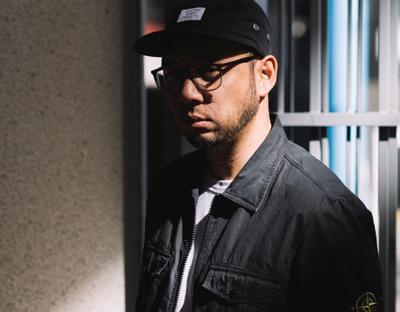
instagram: prsvere
AVNI
Avni is a multimedia storyteller and Silicon Valley native. She’s passionate about using photos and video to showcase entrepreneurs, uncover personal stories, and stalk Boba, her fluffy black cat.

instagram: glasslocketfilm
KEVIN B. MARKS

Kevin is a writer, musician, and collector of weird lounge and surf vinyl. His first book—a memoir told through pop music—will be published in early 2019. You can find him jogging on the Los Gatos Creek Trail with his wife or at home telling his two sons, “STOP THAT!”
VIVIAN

Vivian draws upon numerous aesthetics to create fashion editorials and fine art photography meant to showcase the juxtaposition between the ordinary and the fantastic.
instagram: vivysachs
DIANE
Diane produces and hosts a weekly public affairs program on Radio KKUP, 91.5 fm, and organizes the Silicon Valley Bikes! Festival. She’s a San Josè bike partier, culture vulture and high-tech company wage slave.
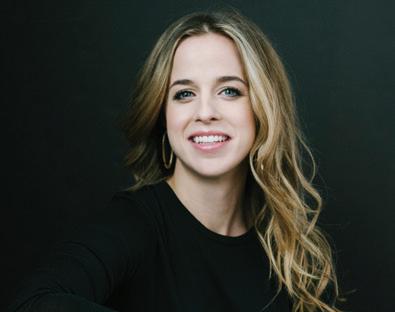
instagram: postcardsfromsiliconvalley
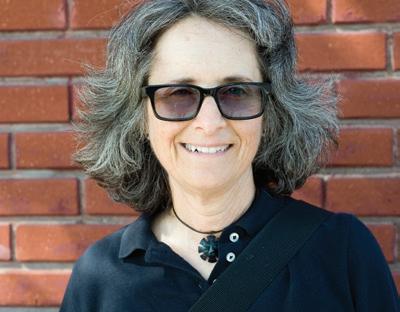
92 Device 11.2
SACHS
SOLOMON
LEVY
DUCHESNE
Banking with your best interests at heart. techcu.com ©Technology Credit Union. Federally insured by NCUA. Downtown San Jose FARMERS’ MARKET Downtown San Jose FARMERS’ MARKET Downtown San Jose FARMERS’ MARKET Downtown San Jose FARMERS’ MARKET A SAN JOSE DOWNTOWN ASSOCIATION PRODUCTION sjdowntown.com | 4O8.279.1775 sjdowntown.com | 4O8.279.1775 A SAN JOSE DOWNTOWN ASSOCIATION PRODUCTION, IN PARTNERSHIP WITH PACIFIC COAST FARMERS’ MARKET ASSOCIATION FRIDAYS 10-2 MAY 3-NOV 1 | SAN PEDRO SQUARE

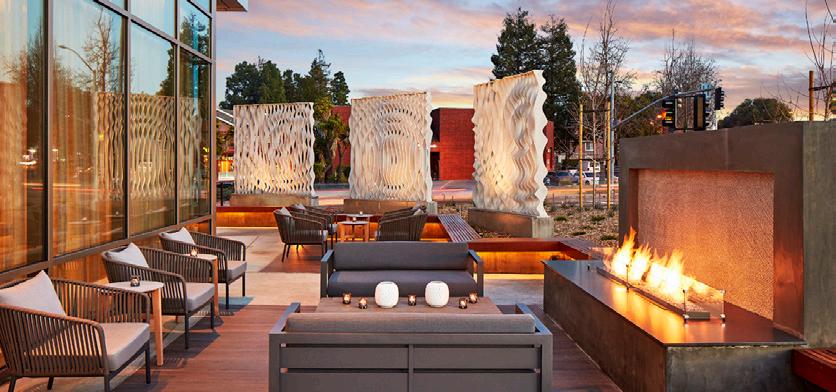









95 Sight & Sound 11.1 NOW OPEN IN SUNNYVALE Stylish, intuitive guest rooms Luxurious lobby lounge serving hand-crafted cocktails and small bites Innovation Lab and Media Salon for next-generation meetings Beautiful indoor/outdoor gathering space 24/7 Fitness center MARRIOTT.COM/SJCAN | 408-733-7950 | 597 E. El Camino Real | Sunnyvale, CA 94086 @ACHOTELSUNNYVALE

CREATE : CONNECT : SAN JOSE
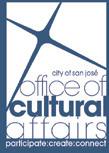
LITTER-ATURE

LITTER-ature is a creative response to litter awareness and prevention through poetry! The City of San José Office of Cultural Affairs Public Art Program and Environmental Service Department worked with Mighty Mike McGee, Poet Laureate of Santa Clara County, artist Carlos Perez and young poets from local middle and high schools to create poems that are now permanent artwork affixed to five hundred new public litter cans installed in San José business districts.

www.sanjoseculture.org









SAVE THE DATES Free every Thursday night Aug. 15–Oct. 3 Plaza de César Chavez, San José STEP INTO A DIFFERENT GENRE EACH WEEK! Salsa • Vogue • Country Line Dance Swing • K-Pop • Bachata • Disco Merengue & Cumbia
Think
Dance Lessons Live Music Beer Garden Knight Foundation • Adobe • Visit San Jose San Jose Downtown Association • City of San José: Parks, Environmental Services and Transportation Office of Cultural Affairs presents
Dance Now
Later
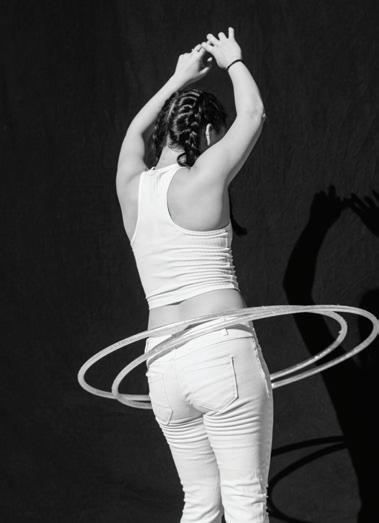


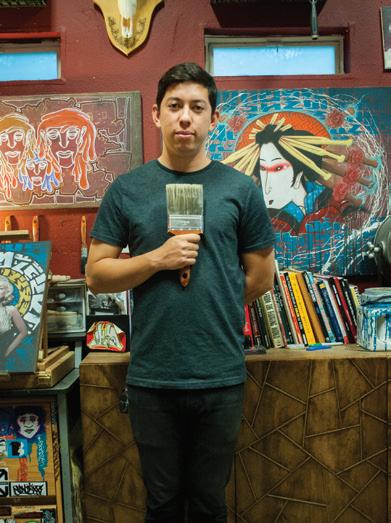
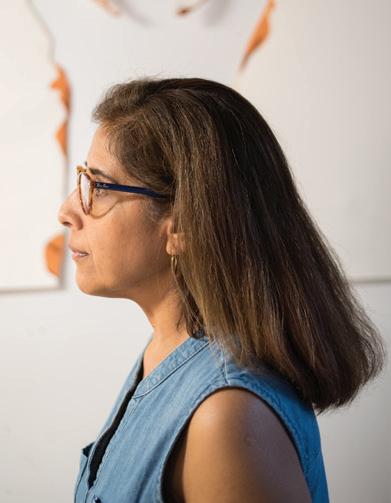





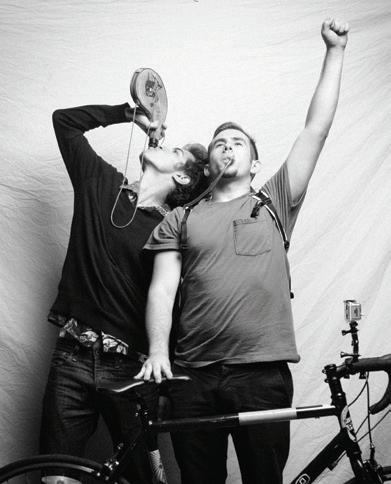
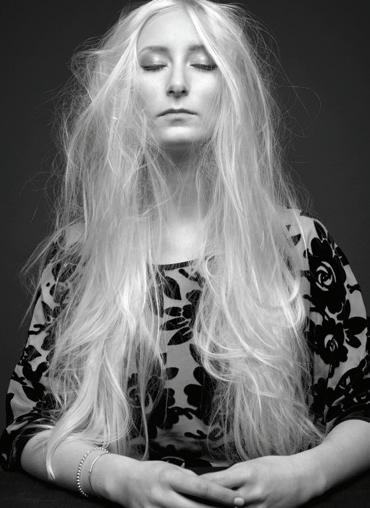
subscribe C south
CONTENT #supportlocal
arts & culture
bay
CONTENT subscribe #WeLovePrint ANNUAL SUBSCRIPTION- $42.00 SINGLE ISSUE- $9.95
Profiles 11.4
Pick-Up Party August 30th 7:00pm-10:00pm History Park
$42.00
SINGLE ISSUE- $9.95
NEXT ISSUE
2019
SAN JOSE
WWW.CONTENT-MAGAZINE.COM social media: contentmag ANNUAL SUBSCRIPTION-
SILICON VALLEY’S INNOVATIVE & CREATIVE CULTURE made in san jose, ca
SUBSCRIBE www.content-magazine.com













 Written by Peter Hsieh | Photography by Daniel Garcia
Written by Peter Hsieh | Photography by Daniel Garcia



 Written by Hannah Duchesne
Written by Hannah Duchesne




 Written by Daniel Codella
Photography by Sannie Celeridad mattmarchand.com Instagram matt.marchand
Written by Daniel Codella
Photography by Sannie Celeridad mattmarchand.com Instagram matt.marchand





 Jim Salata
Jim Salata




 Written by Tad Malone
Photography by Leopoldo Macaya
thejemalshow.com Social Media thejemalshow
Written by Tad Malone
Photography by Leopoldo Macaya
thejemalshow.com Social Media thejemalshow

 Fete Silhouettes, titled by Chuka C.
Fete Silhouettes, titled by Chuka C.






 Written by Nathan Zanon Photography by Daniel Garcia flowerboywrites.com Instagram words_and_facialhair
Written by Nathan Zanon Photography by Daniel Garcia flowerboywrites.com Instagram words_and_facialhair

 Written by Sally Ashton Illustration by Lacey Bryant Facebook nils.peterson2
Written by Sally Ashton Illustration by Lacey Bryant Facebook nils.peterson2












 Lucila Chavez, San Jose Chapter Lead
Lucila Chavez, San Jose Chapter Lead




















 LadyfingazJ
Jenicyde
LadyfingazJ
Jenicyde
 Written by Thomas Ulrich
Photography by Daniel Garcia
Written by Thomas Ulrich
Photography by Daniel Garcia

 Jeffery Patterson
Mount Eden Vineyards mounteden.com Visit website for touring, tasting, and purchasings. Facebook mounteden Instragram mountedenvineyards
Jeffery Patterson
Mount Eden Vineyards mounteden.com Visit website for touring, tasting, and purchasings. Facebook mounteden Instragram mountedenvineyards





 Founder Josh Wilbur
Founder Josh Wilbur



 Photography by Vivian Sachs
Wardrobe by Evaro Italia
Photography by Vivian Sachs
Wardrobe by Evaro Italia


 Venice lace top $420; wide leg organza trousers $320
Nasty Girl crop top $24 ; wide leg organza trousers $320
Venice lace top $420; wide leg organza trousers $320
Nasty Girl crop top $24 ; wide leg organza trousers $320



 Black and white striped deep V mini dress $620
Black and white striped deep V mini dress $620

 Black and white striped sequin crop top $380 with Oysho yellow trousers
Oysho yellow satin trousers, $45.00
Black and white striped sequin crop top $380 with Oysho yellow trousers
Oysho yellow satin trousers, $45.00
 Mermaid sequin dress $1100 with zip up hooded sweatshirt (not Evaro)
Mermaid sequin dress $1100 with zip up hooded sweatshirt (not Evaro)








































